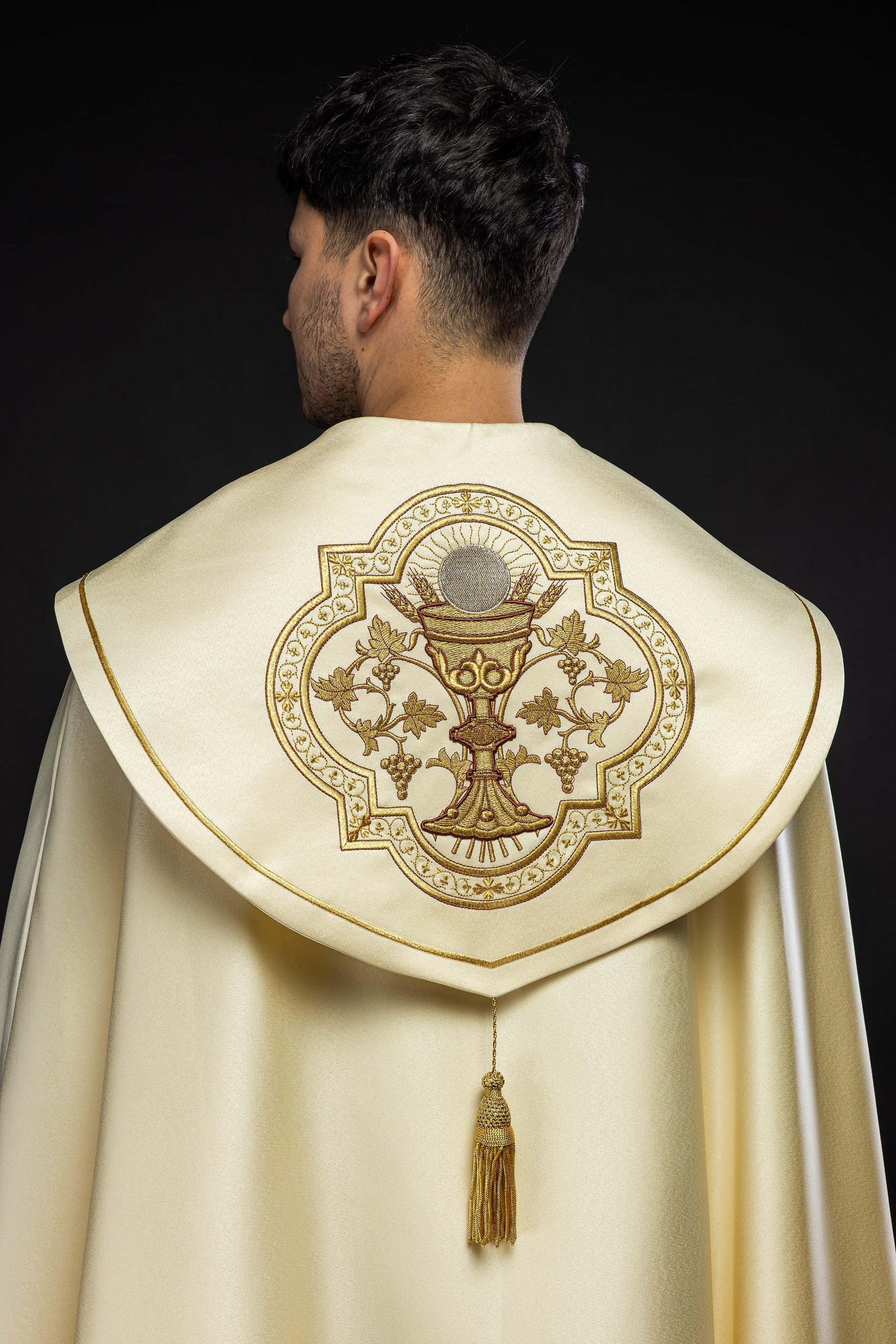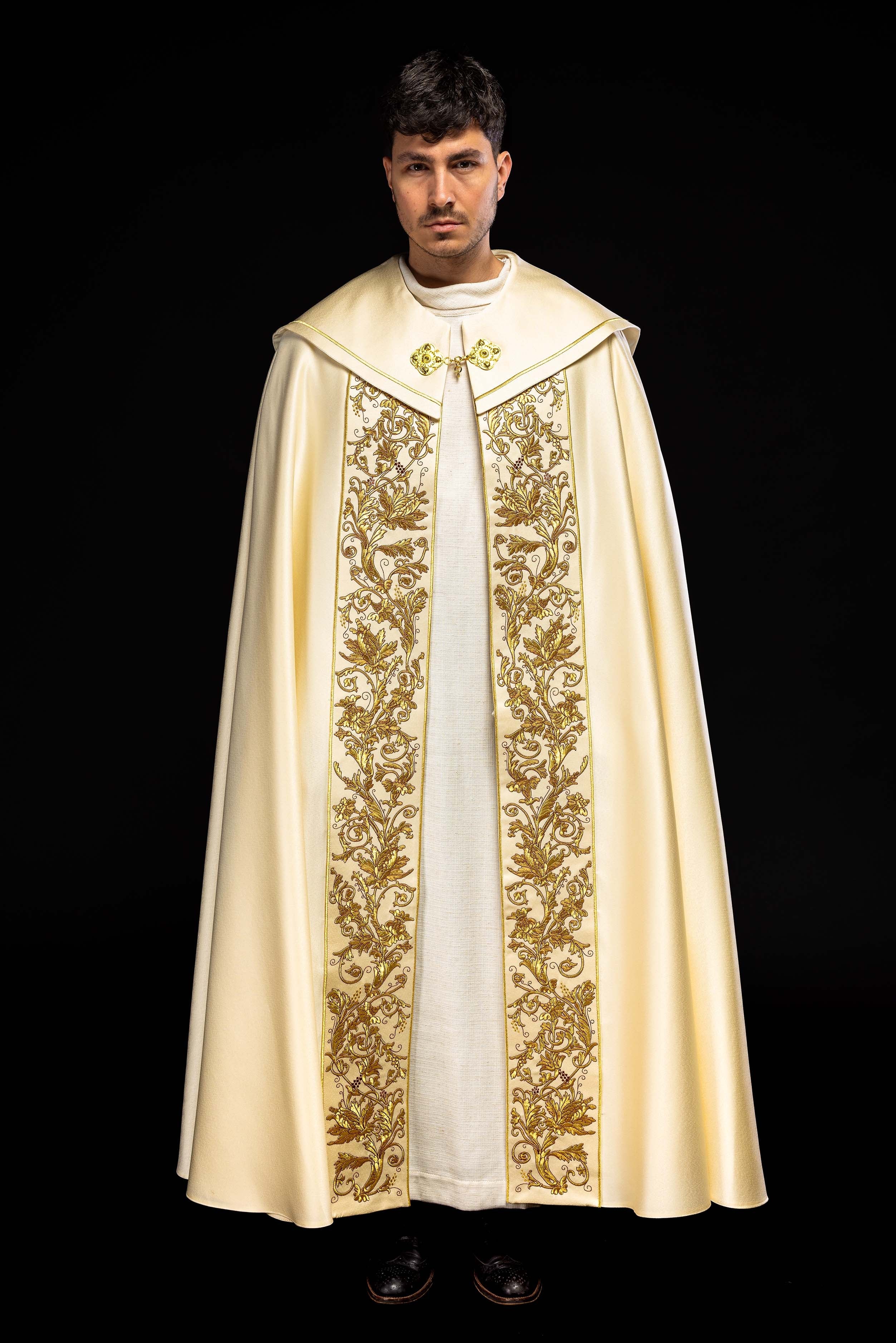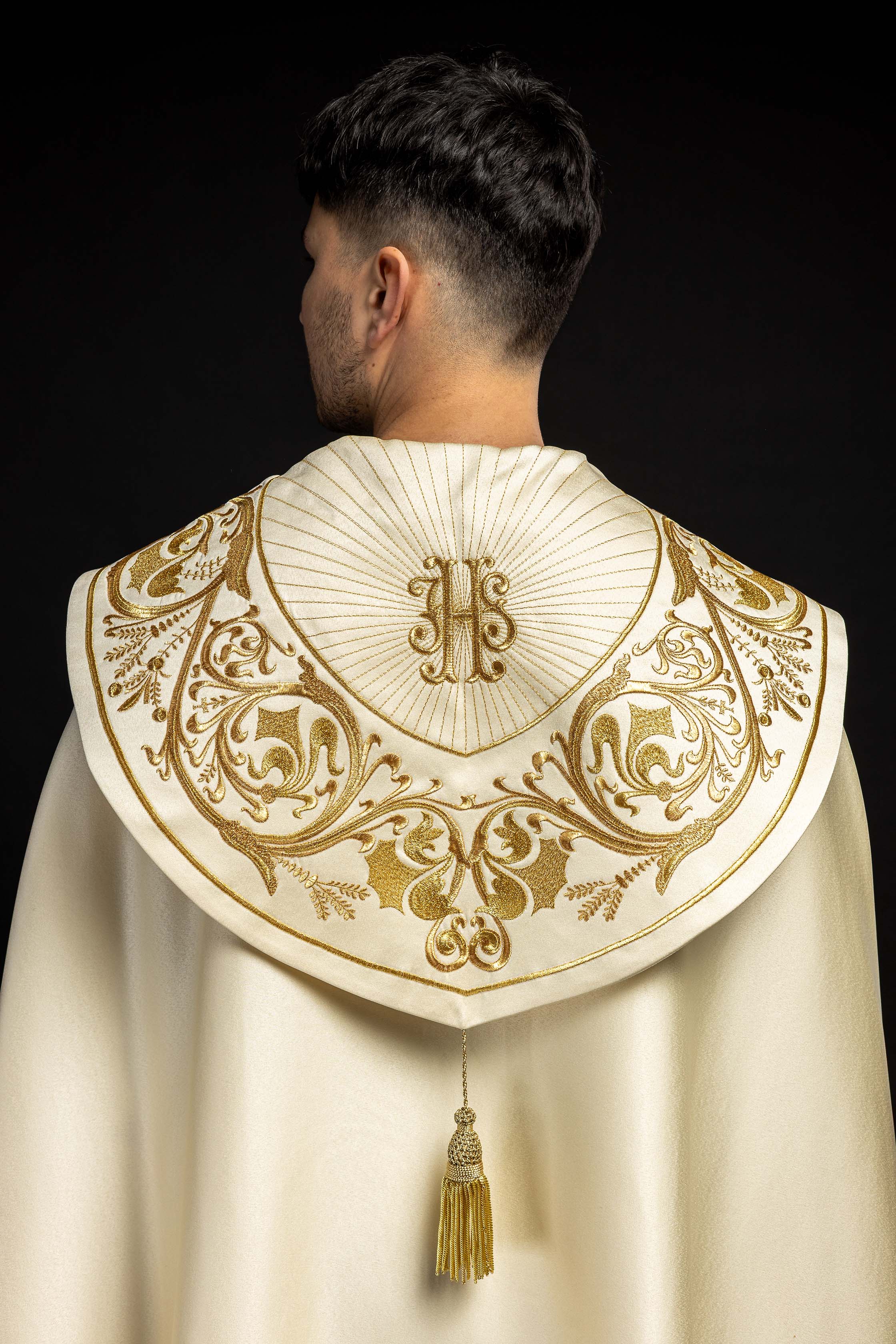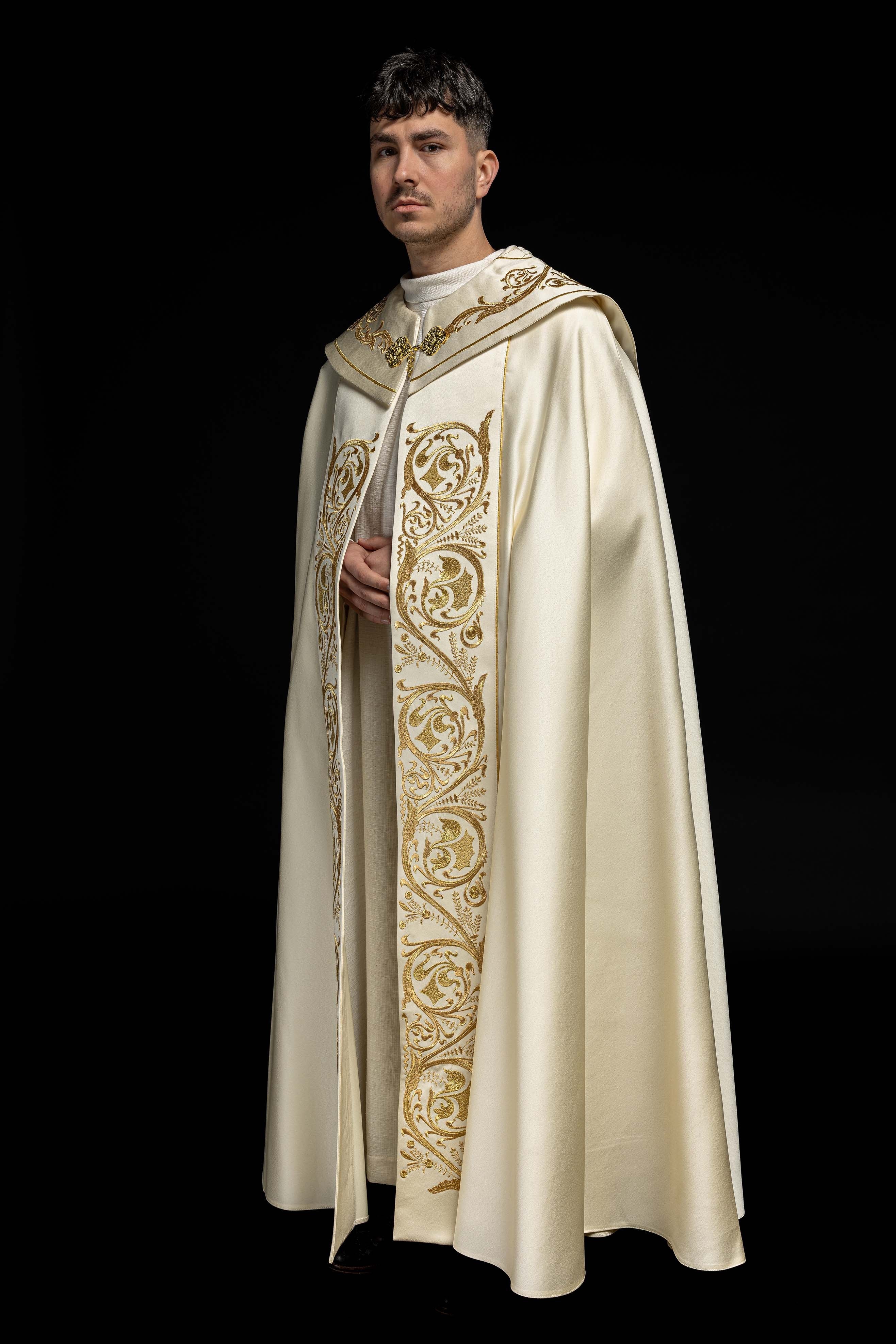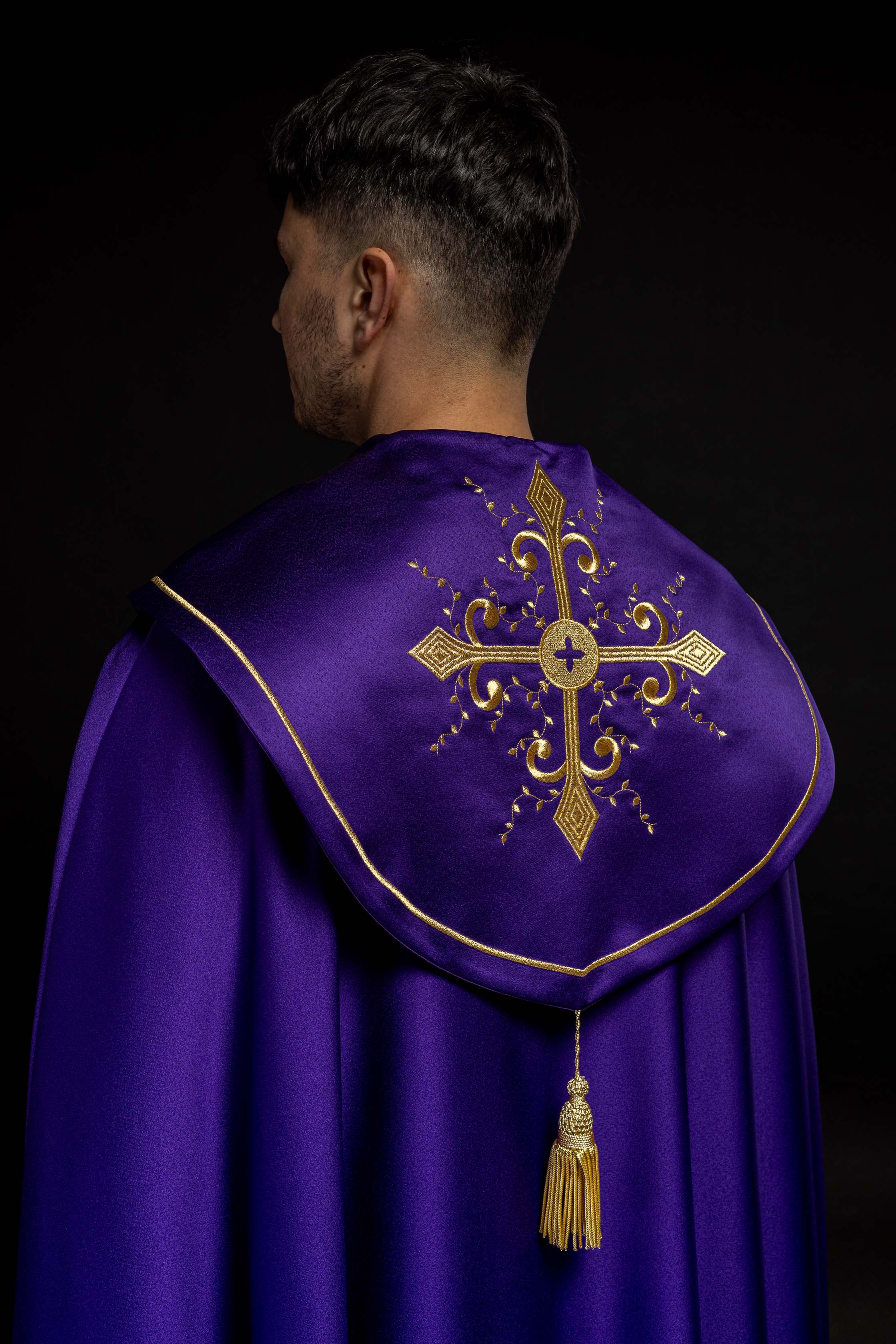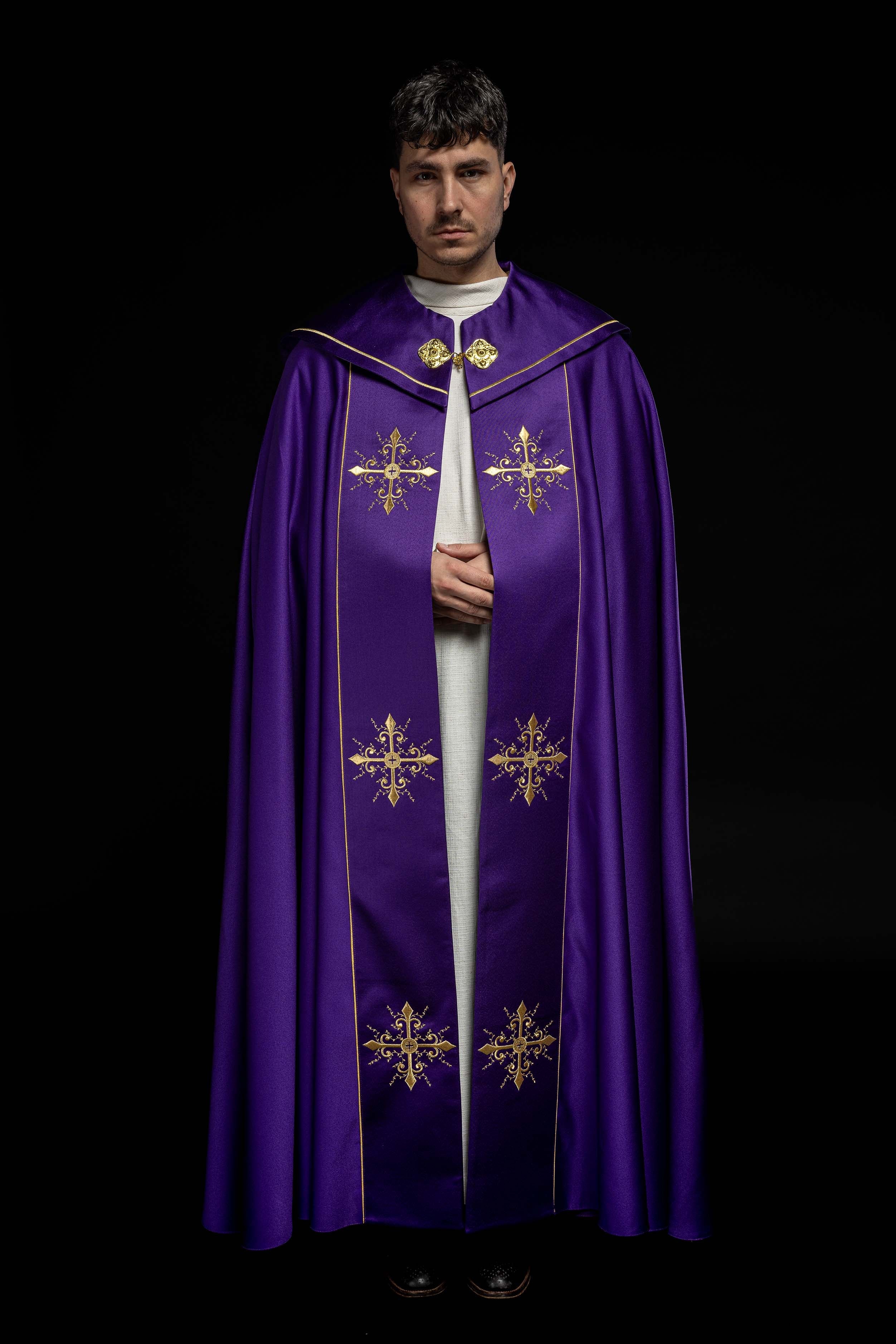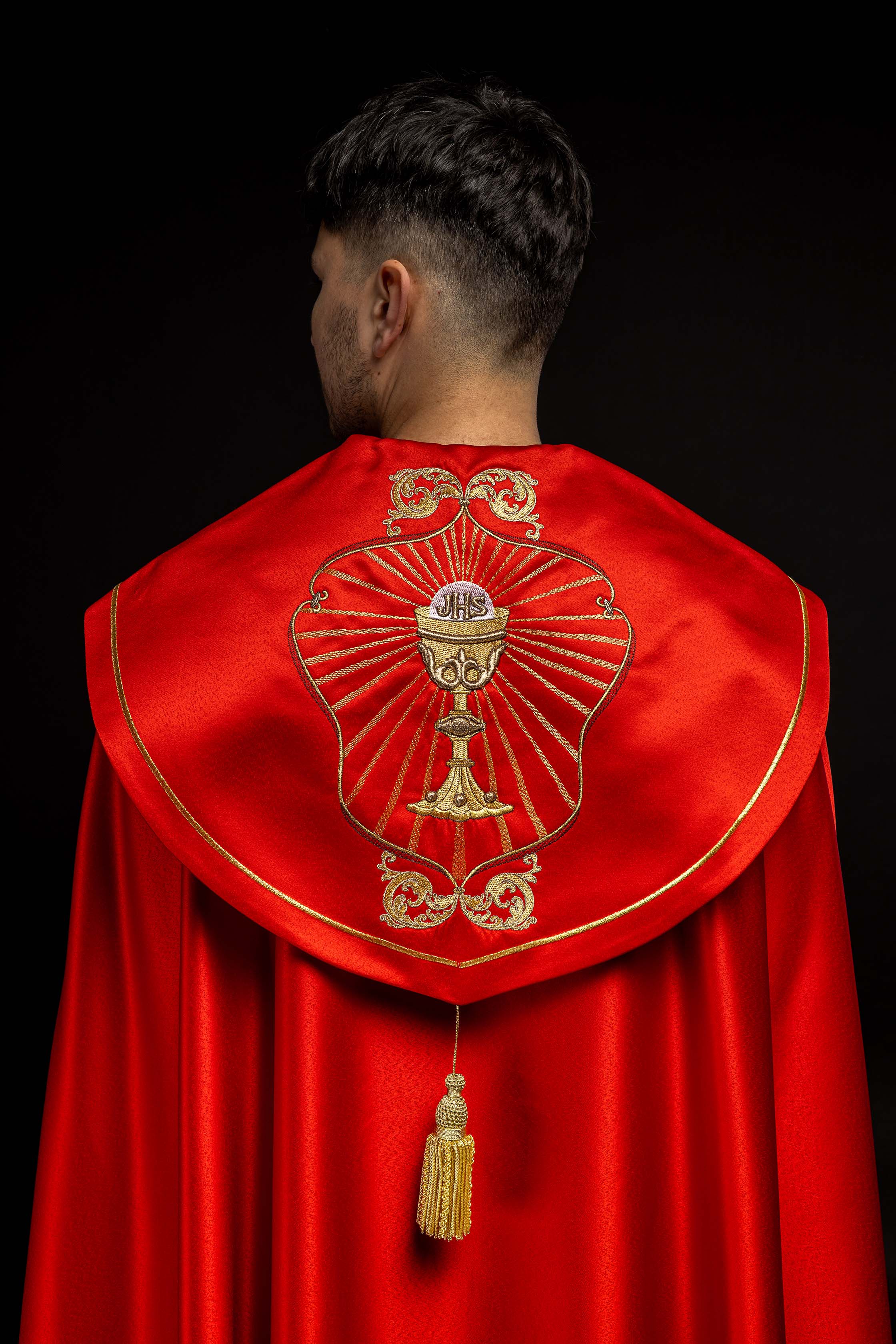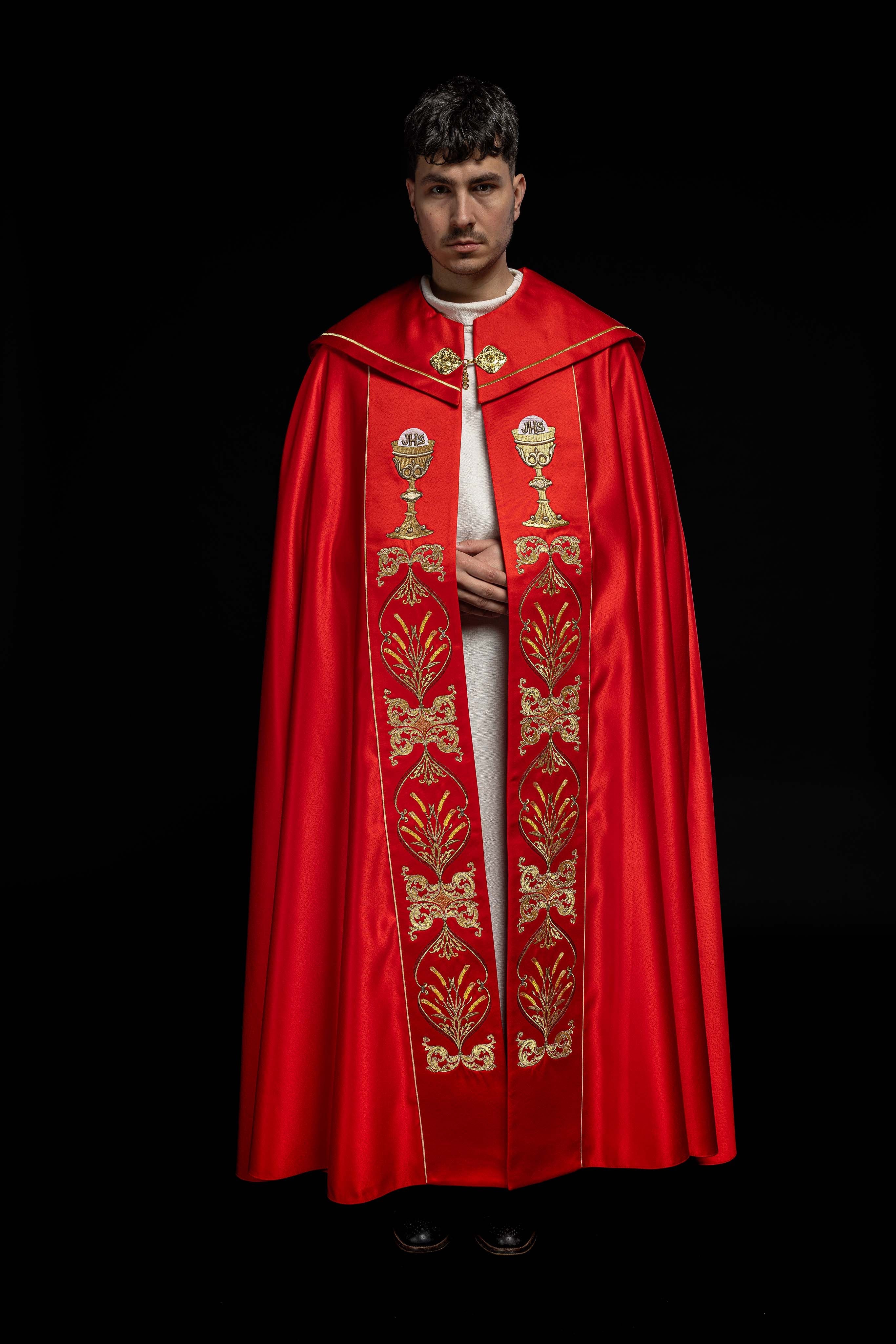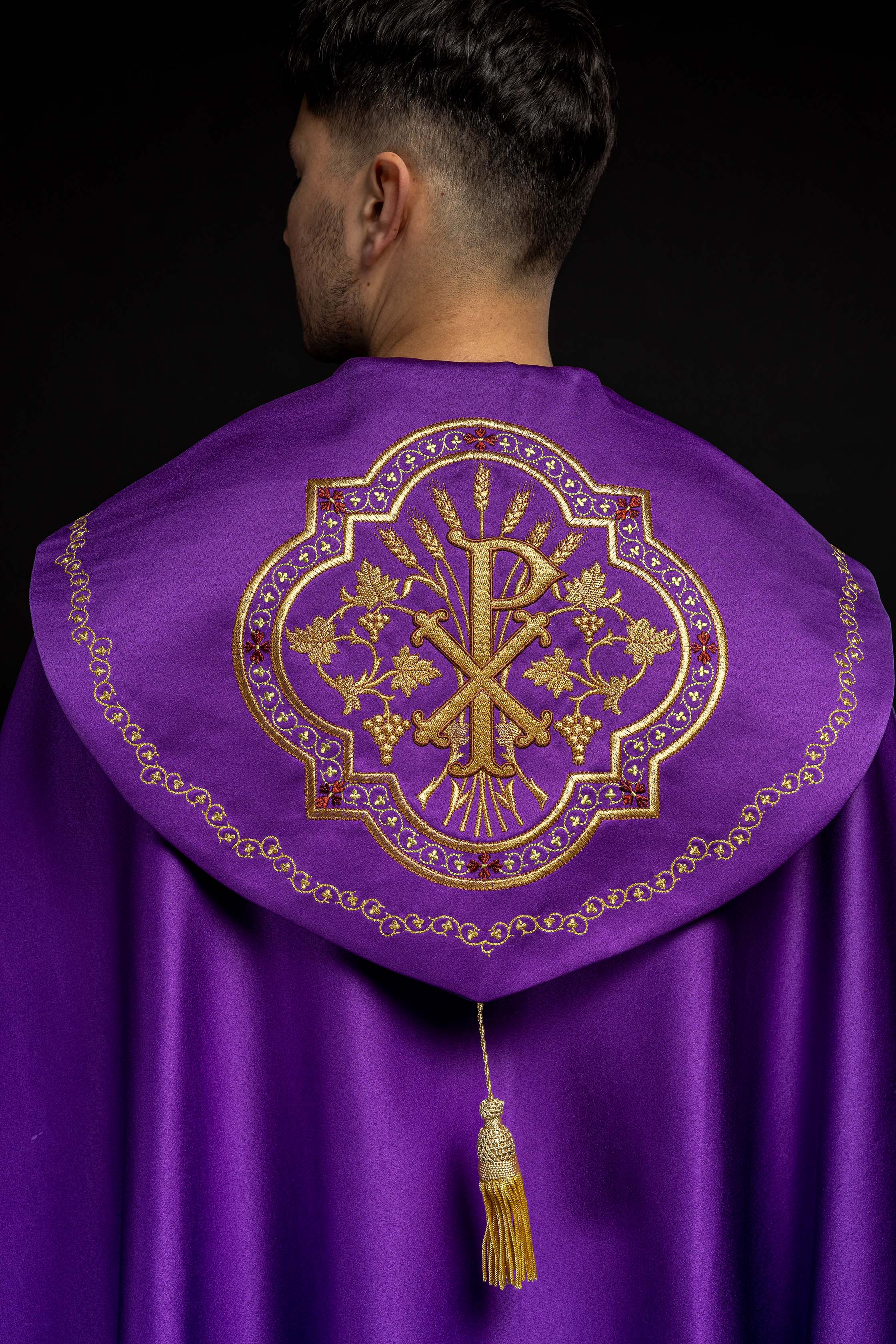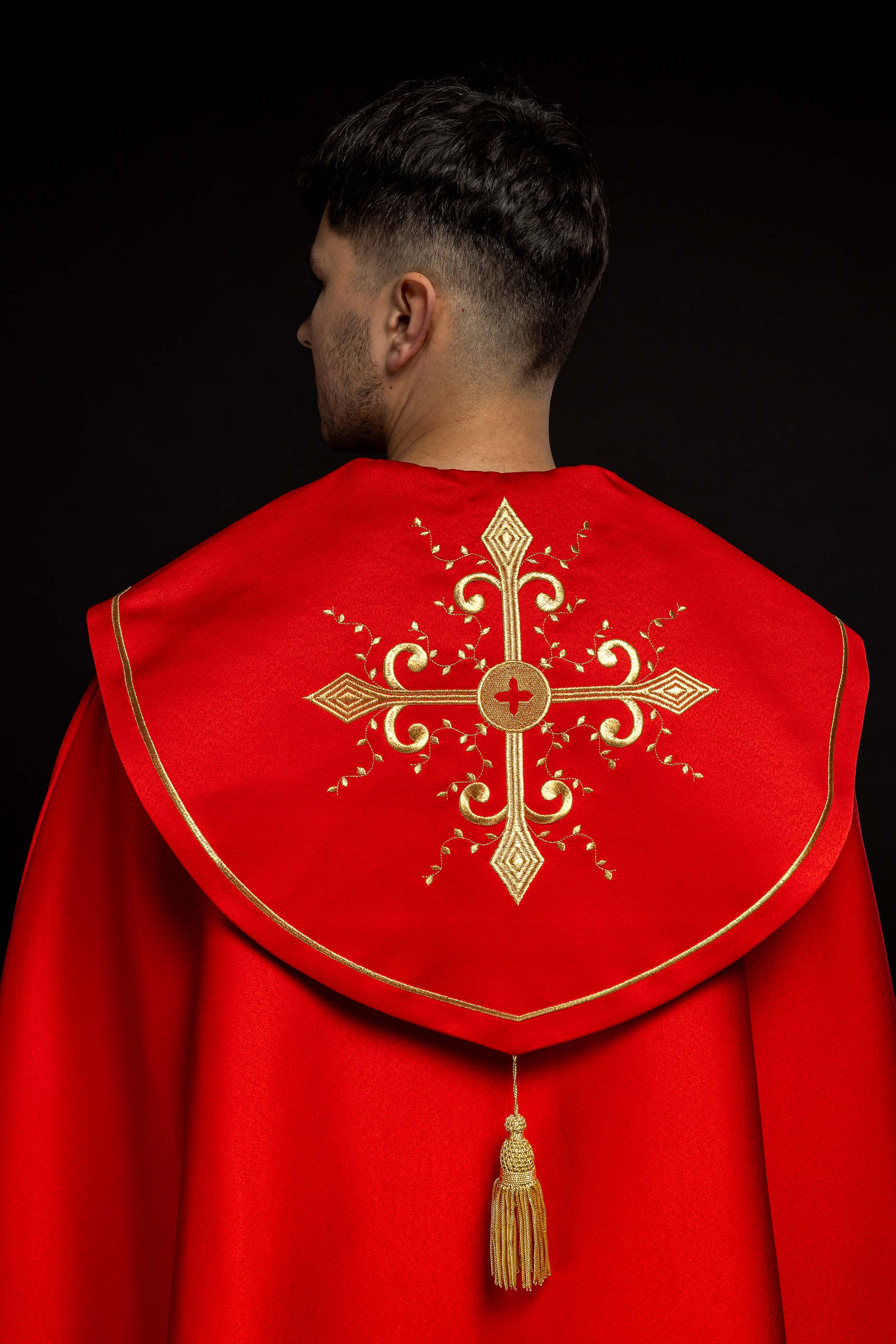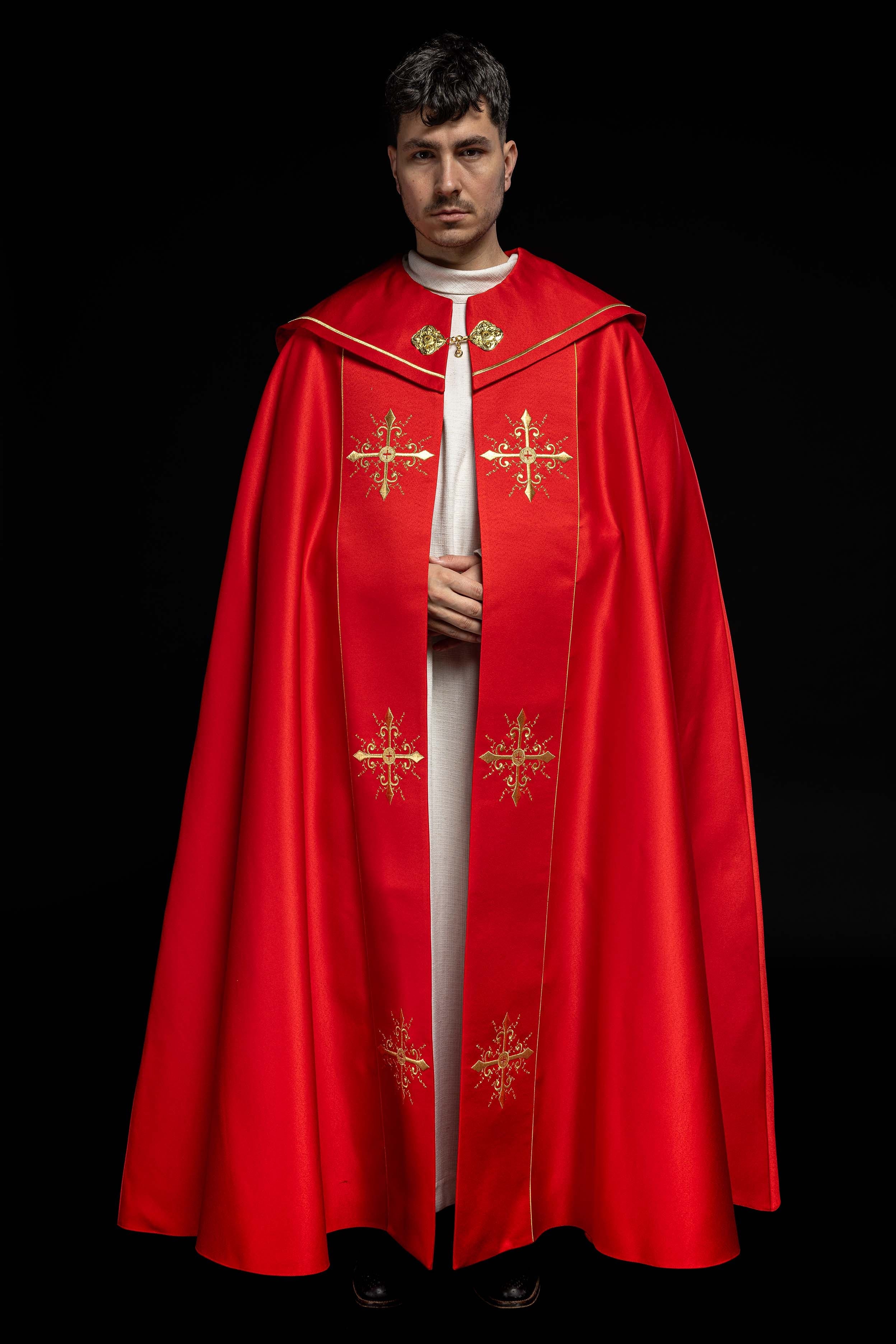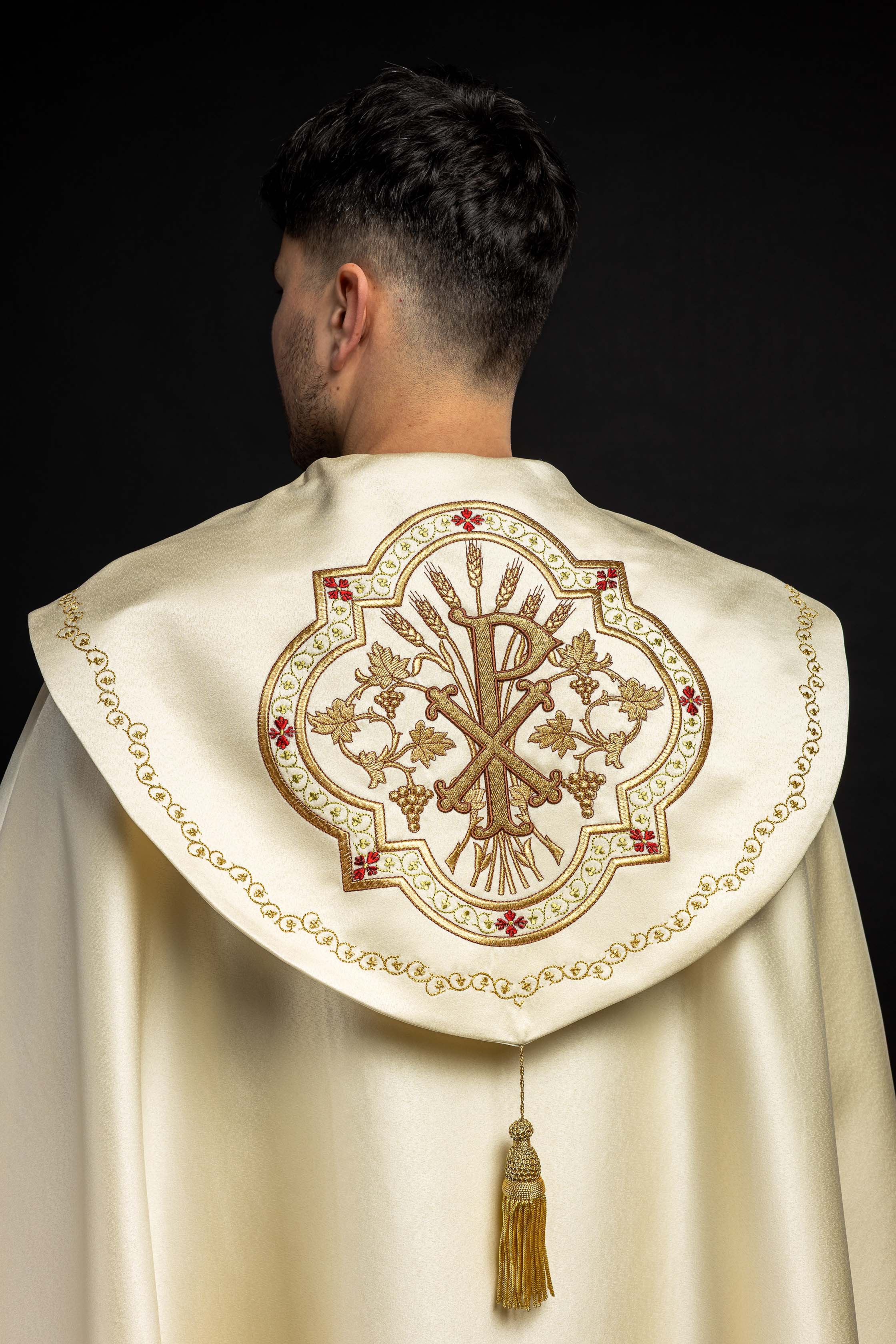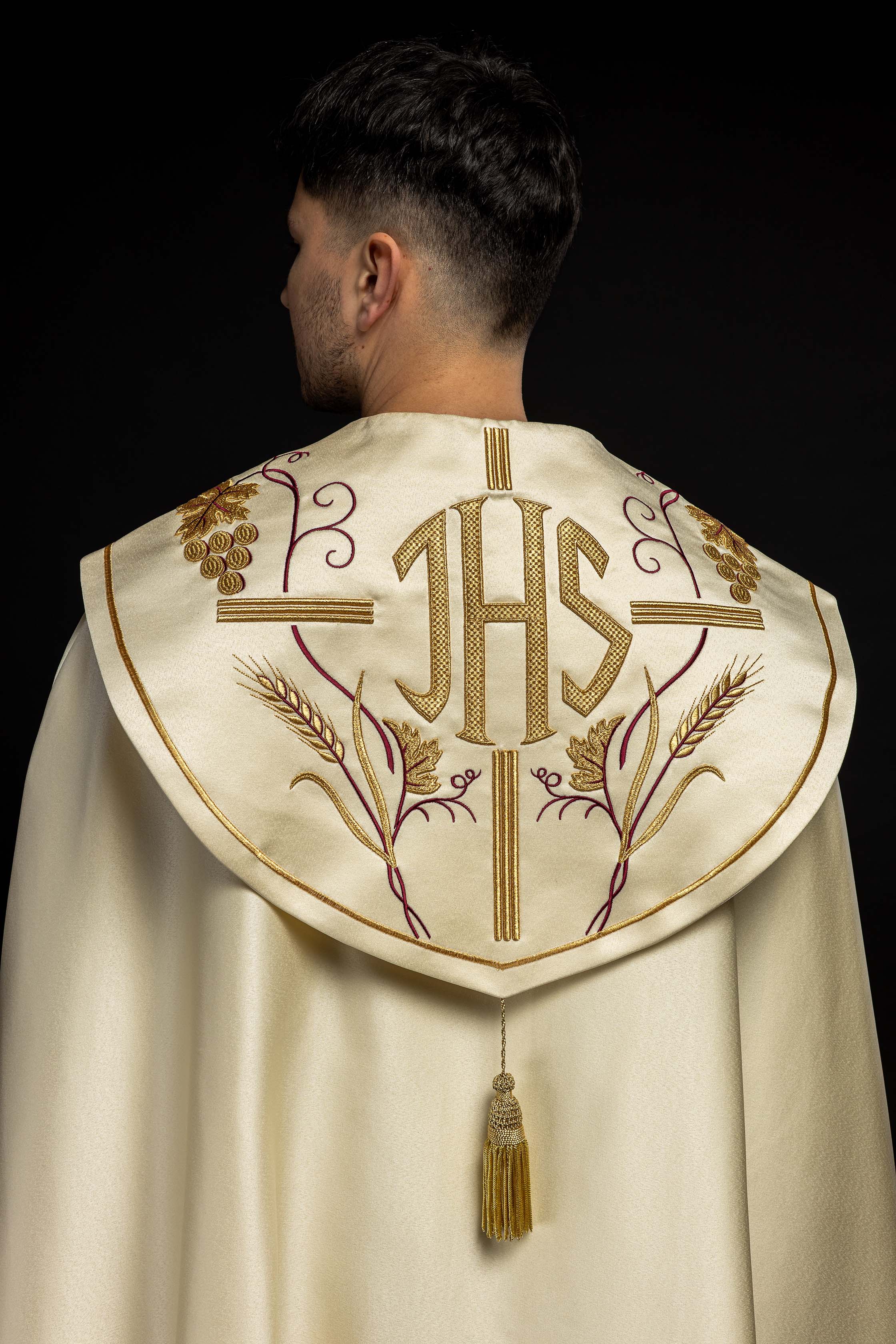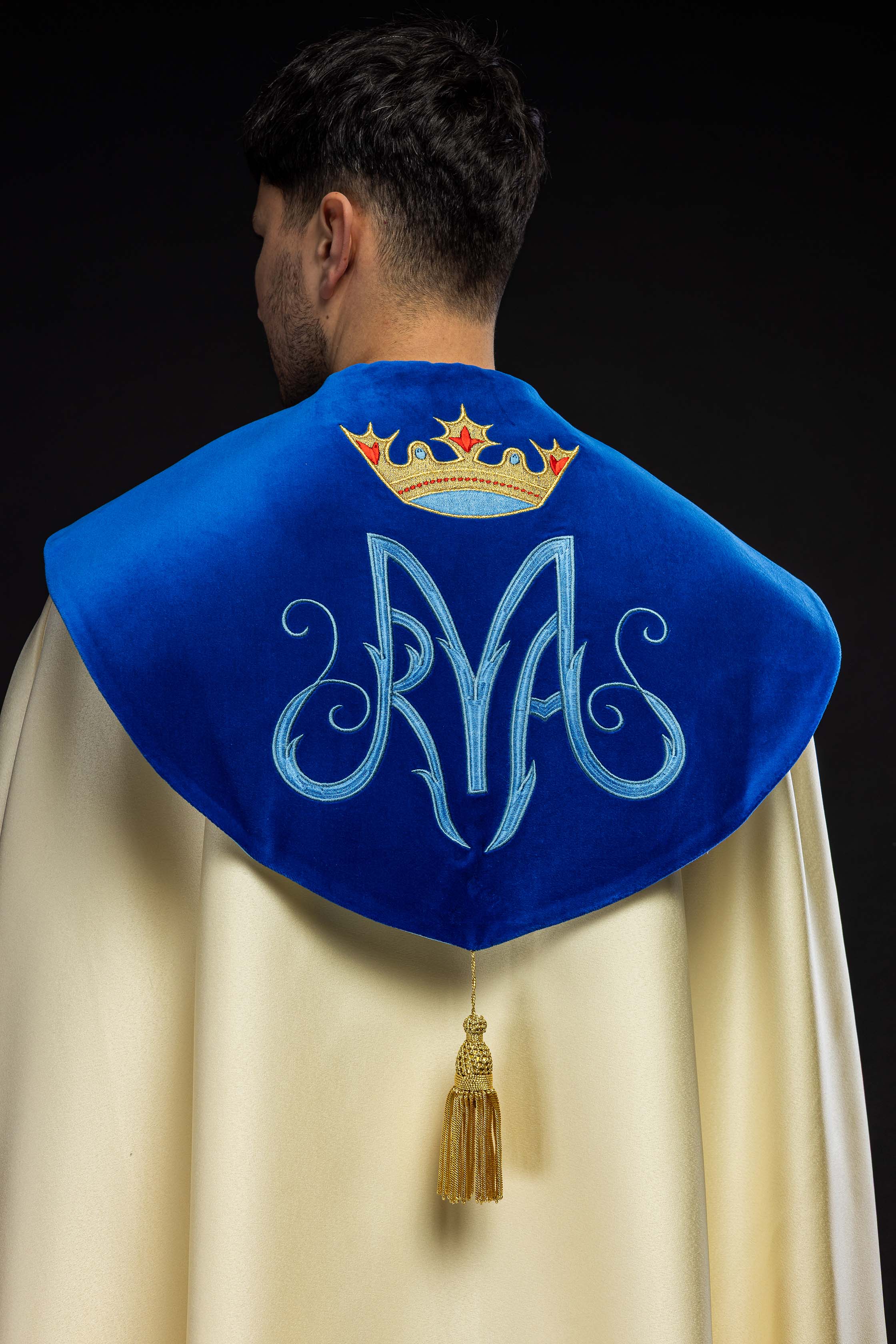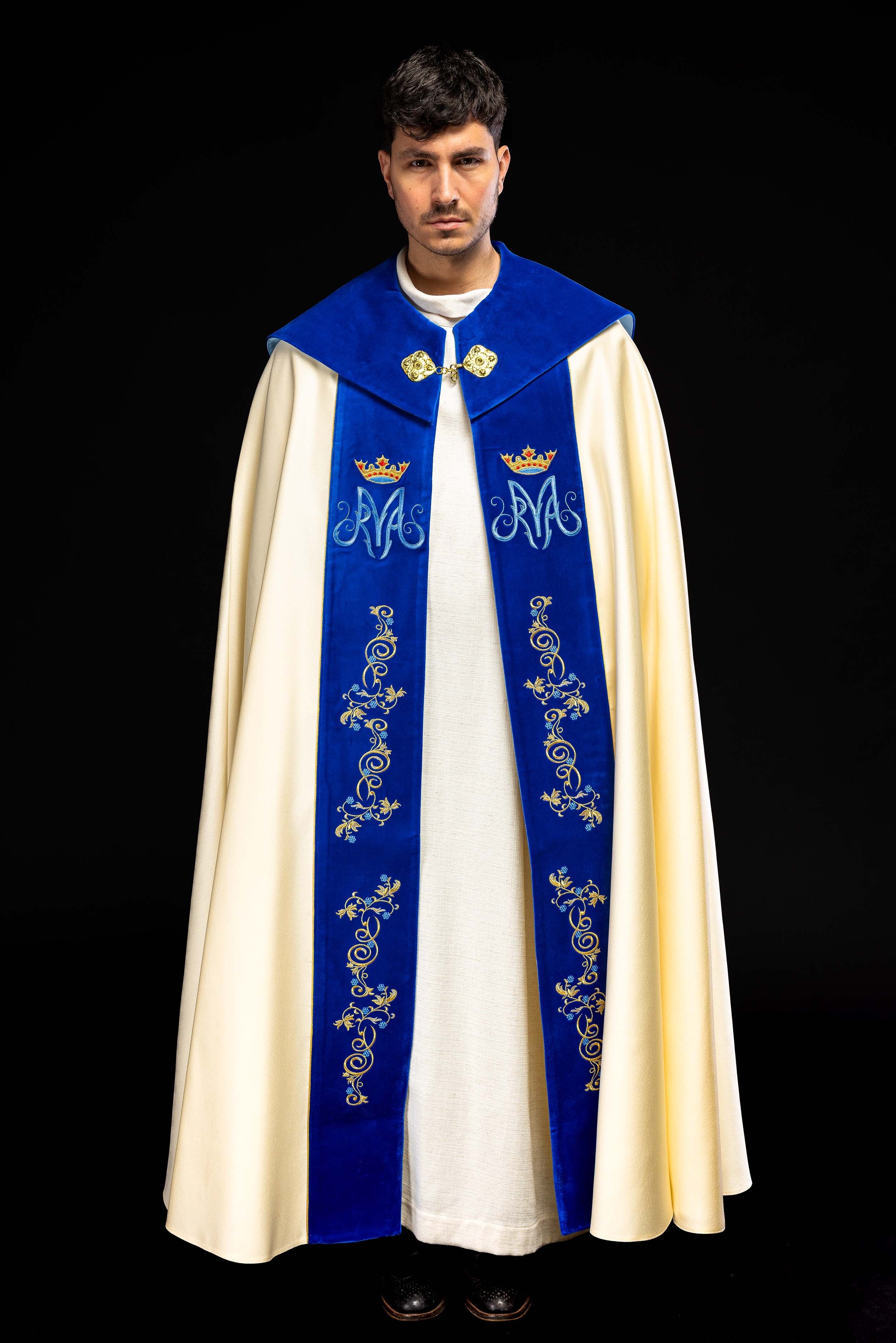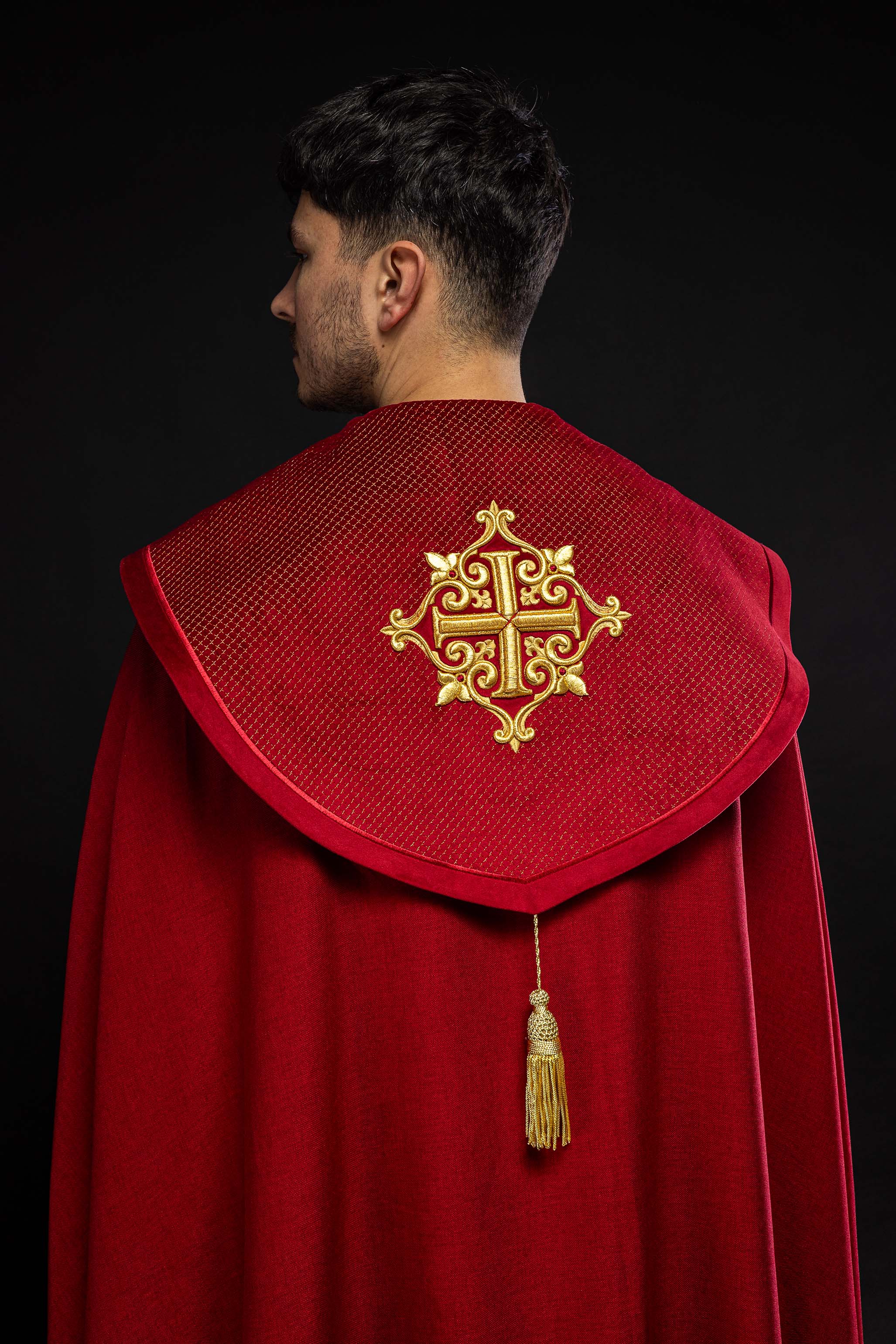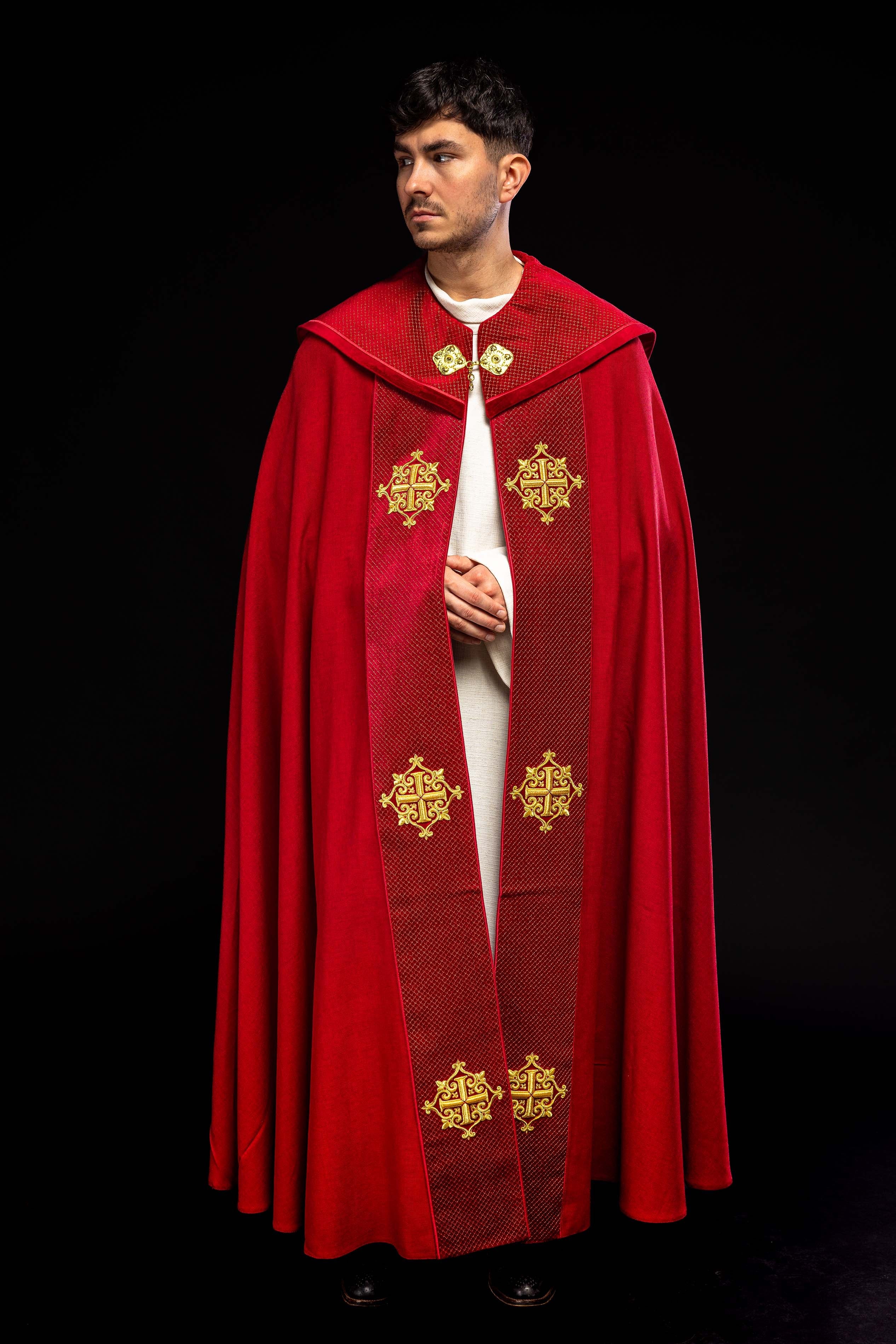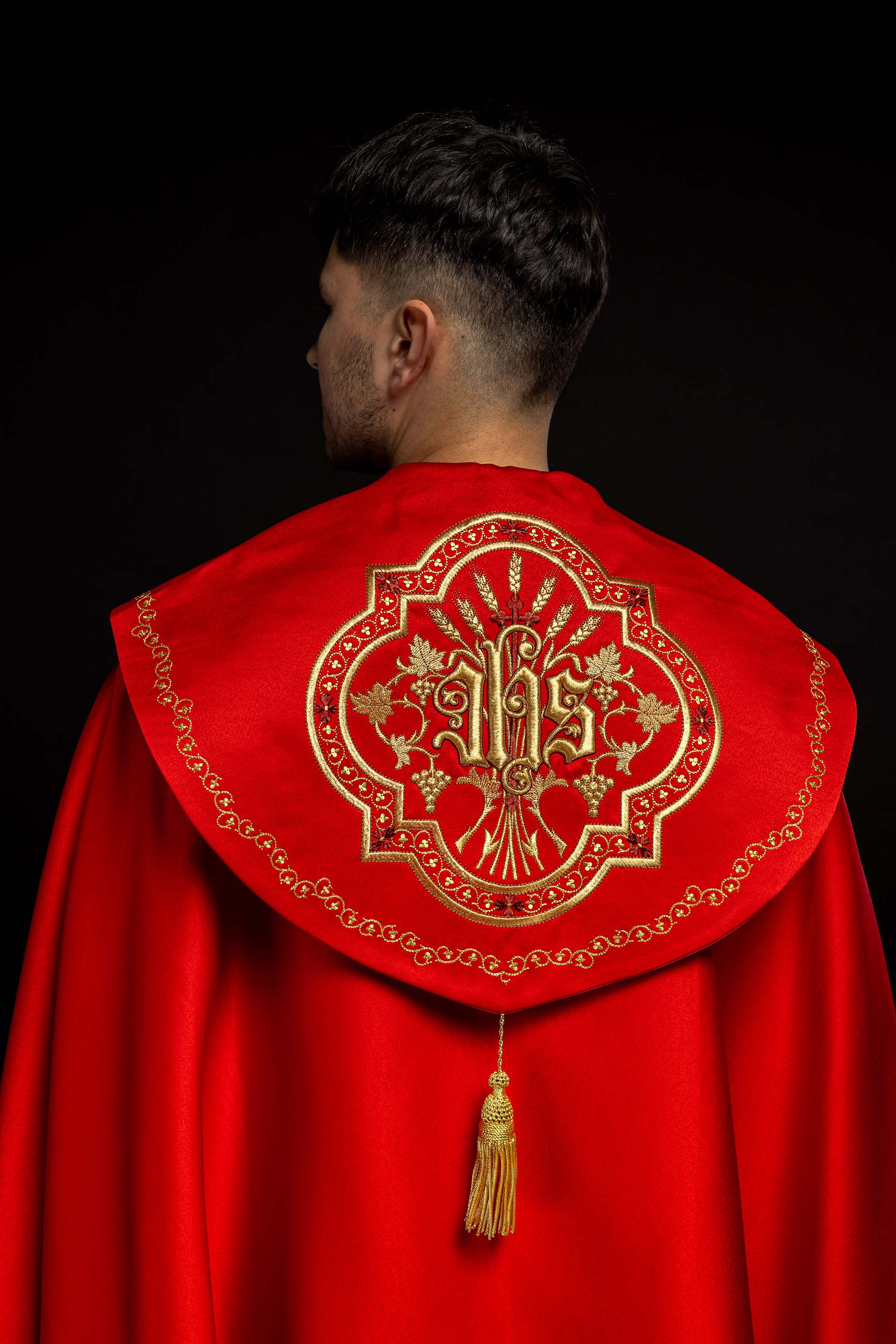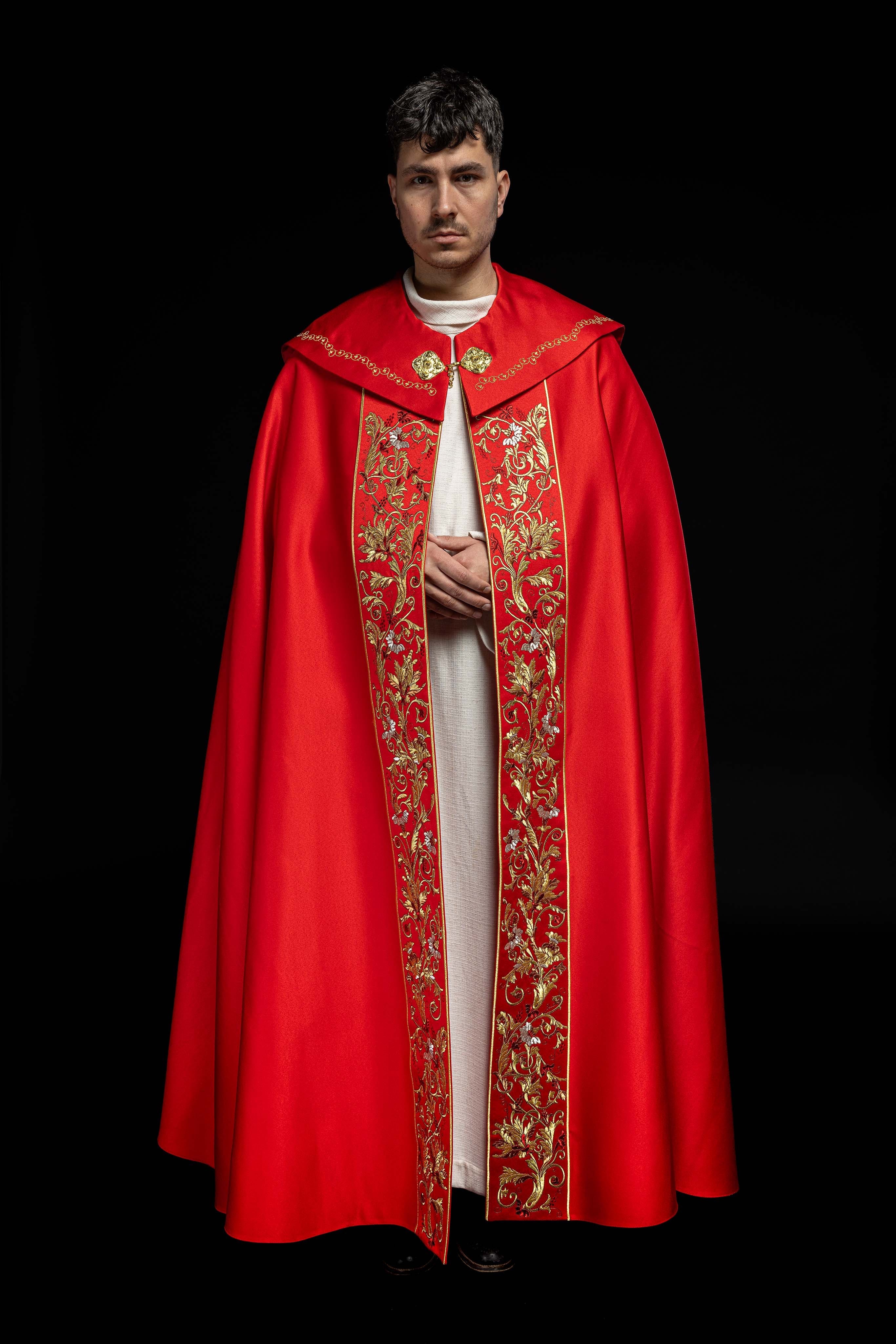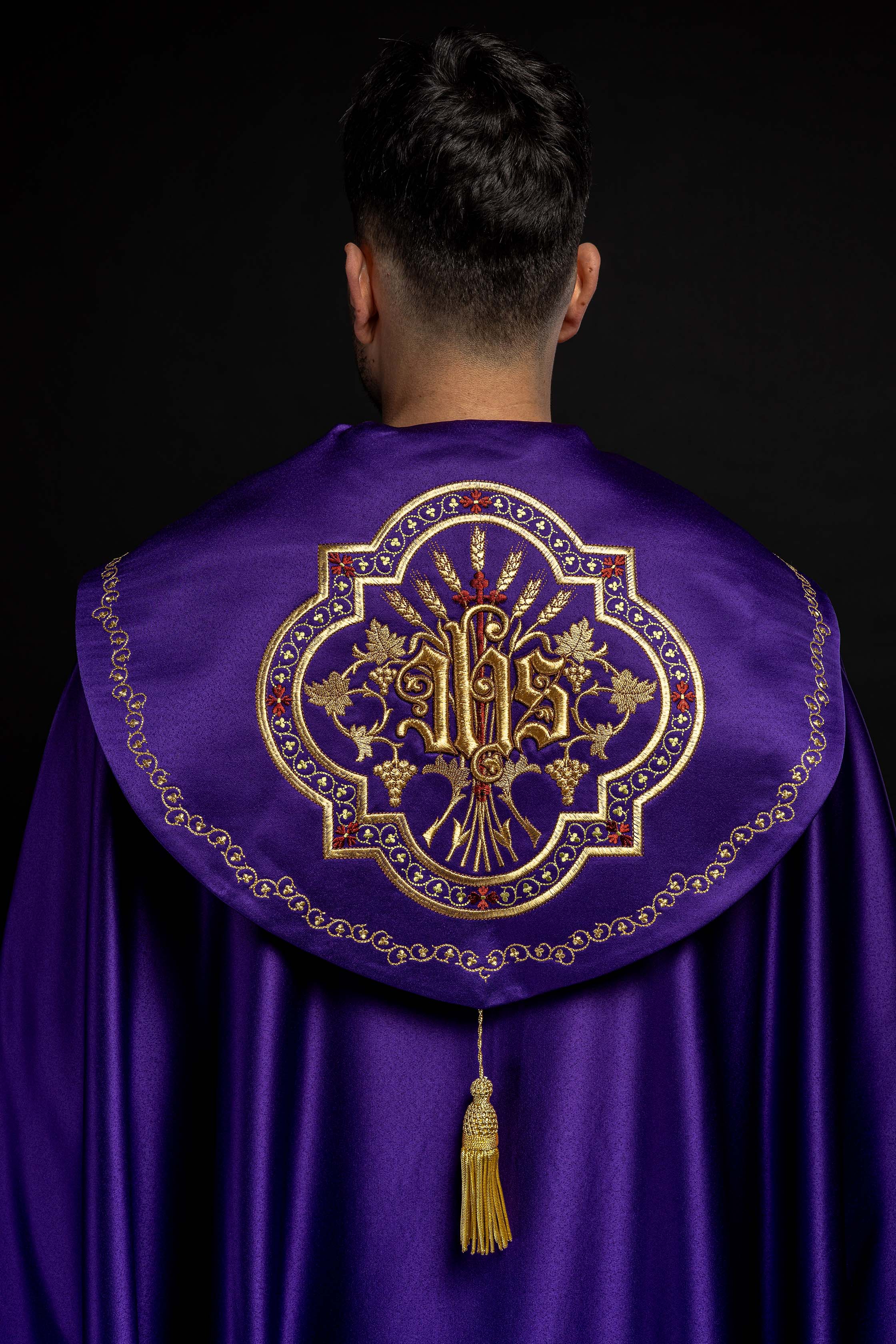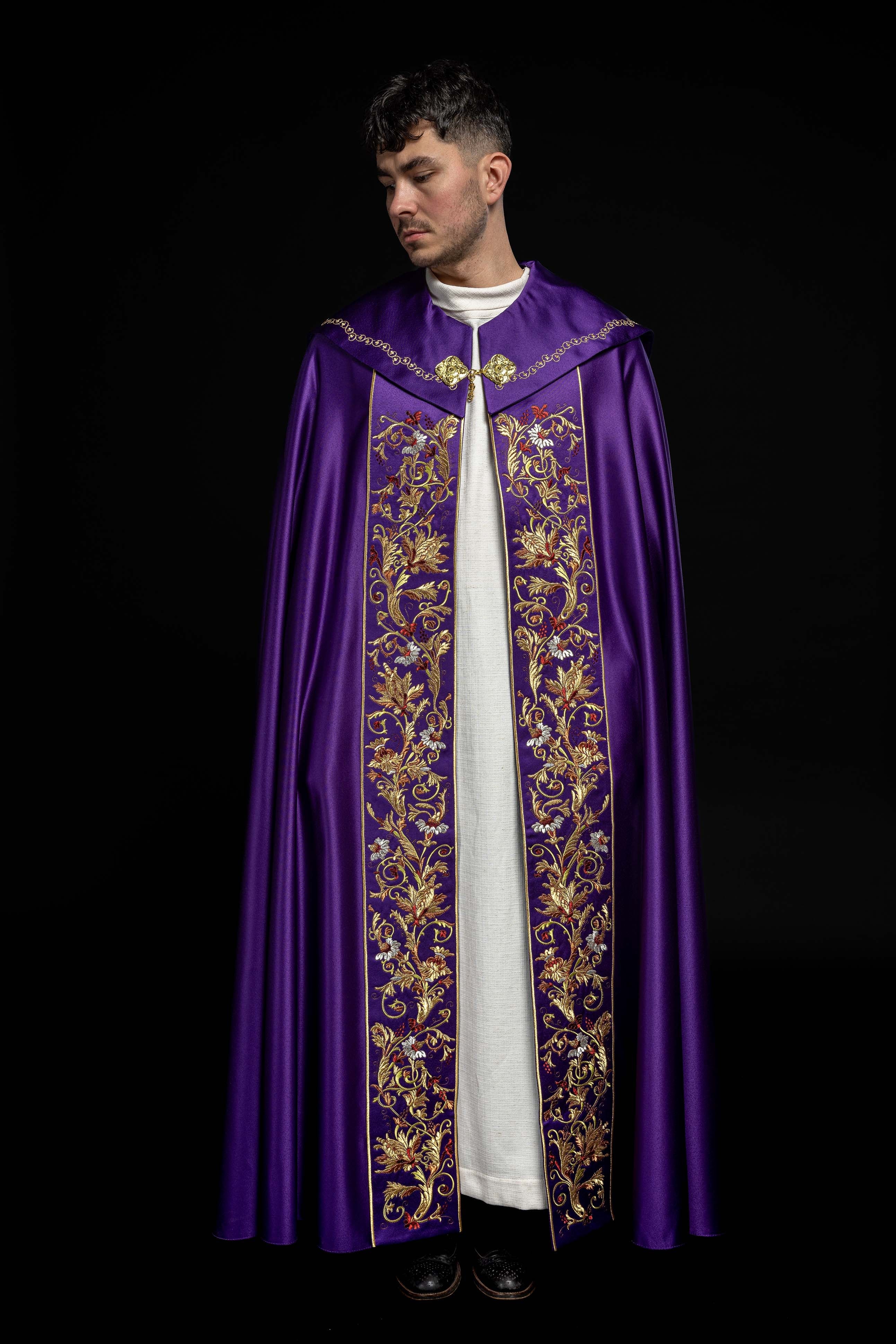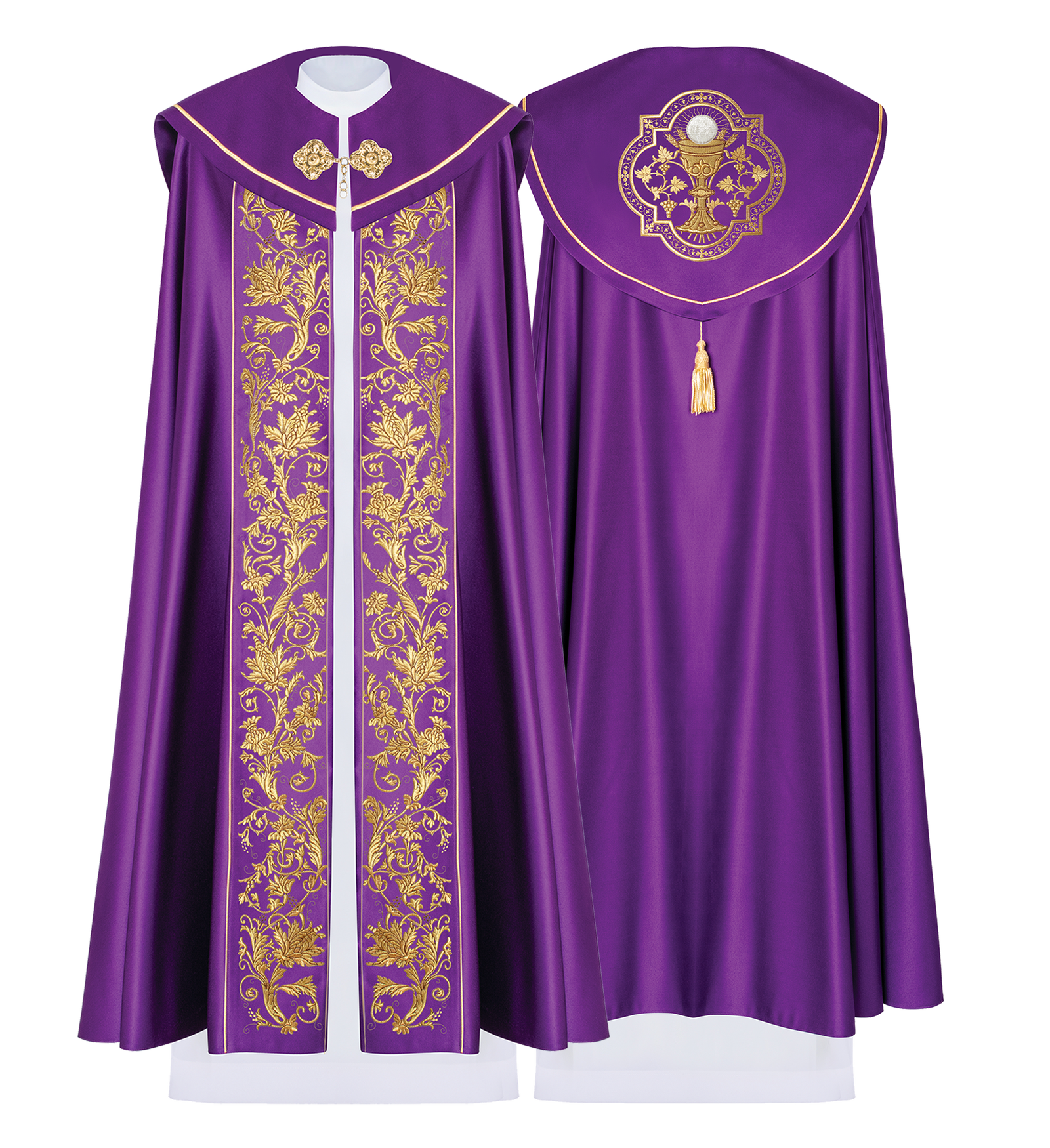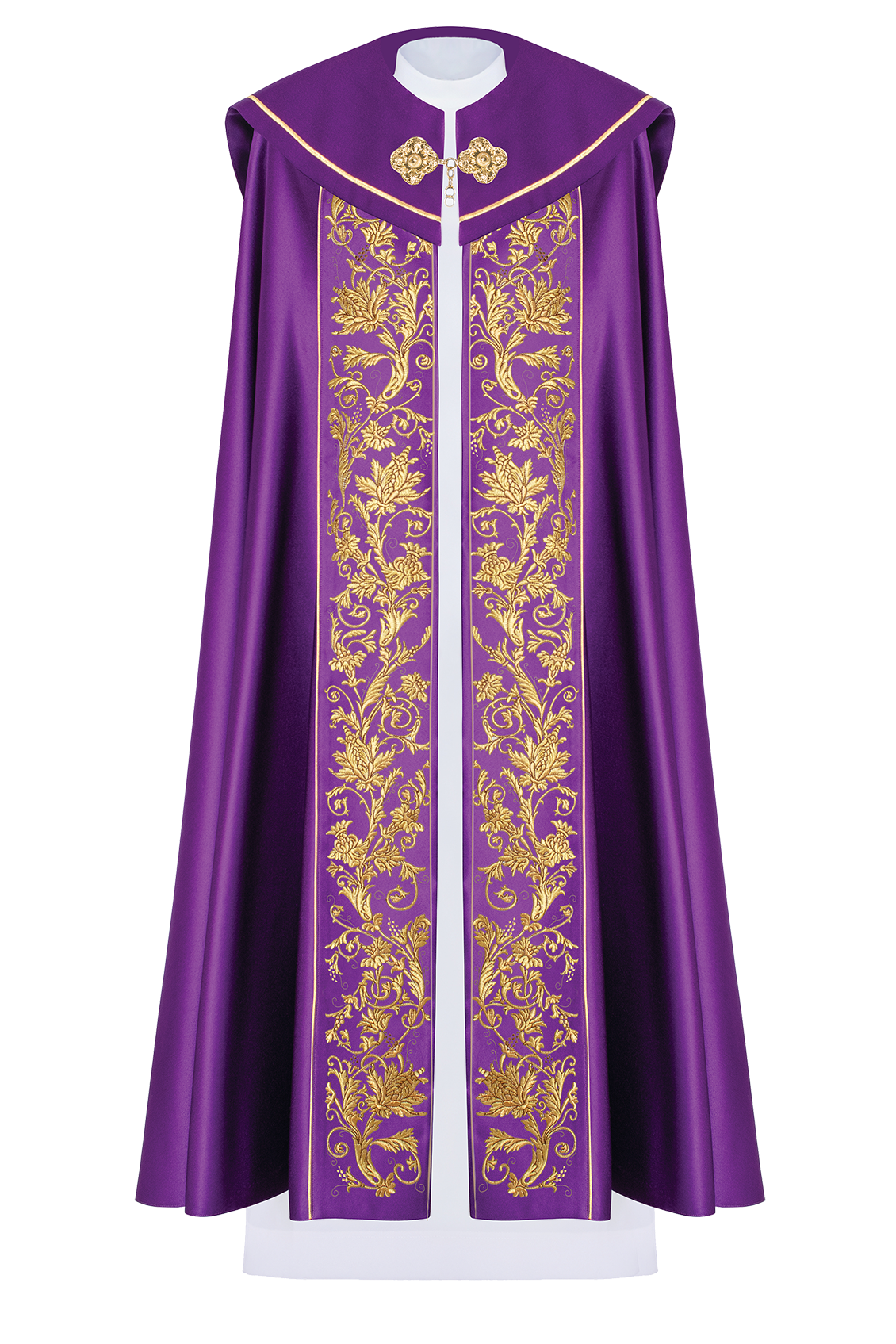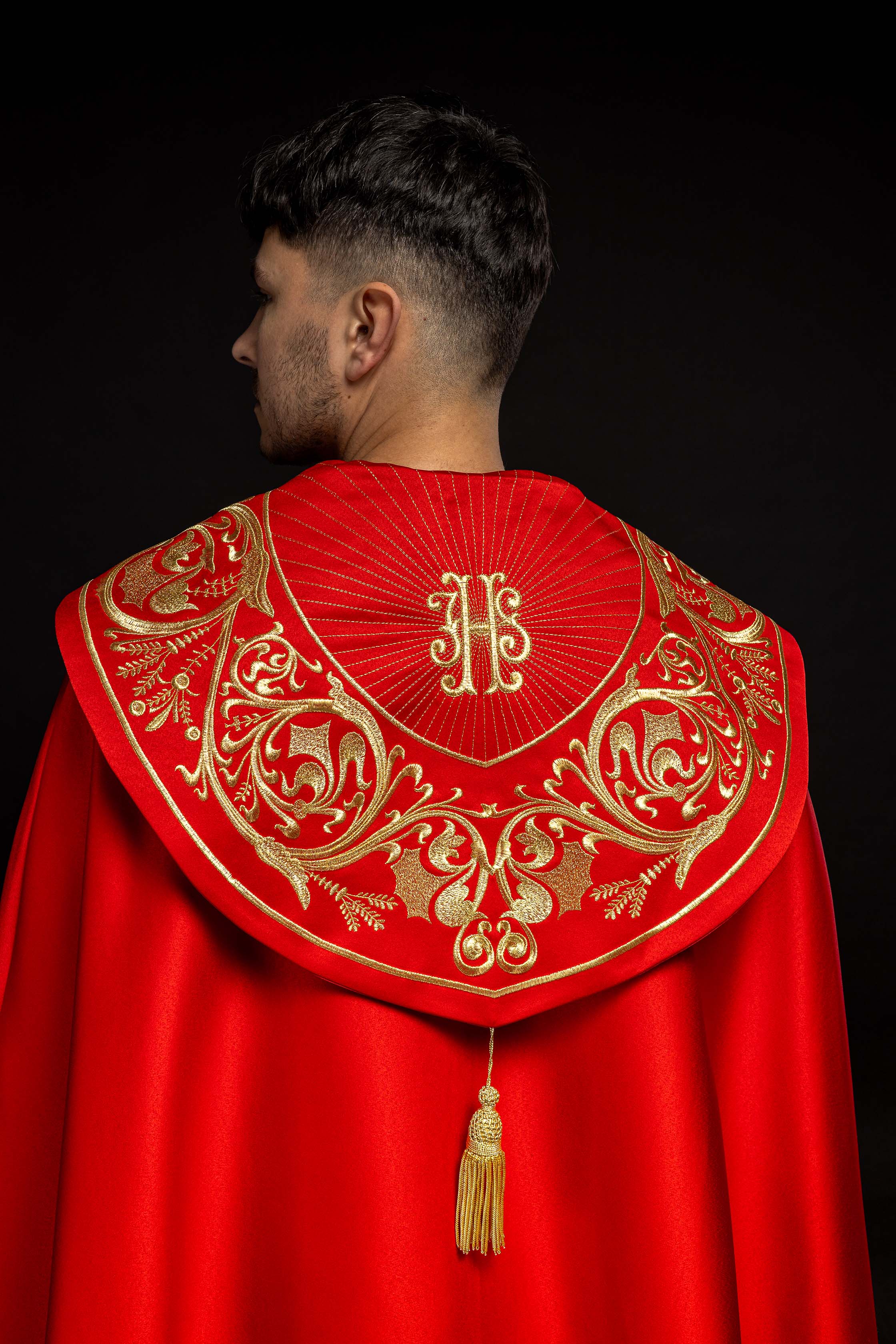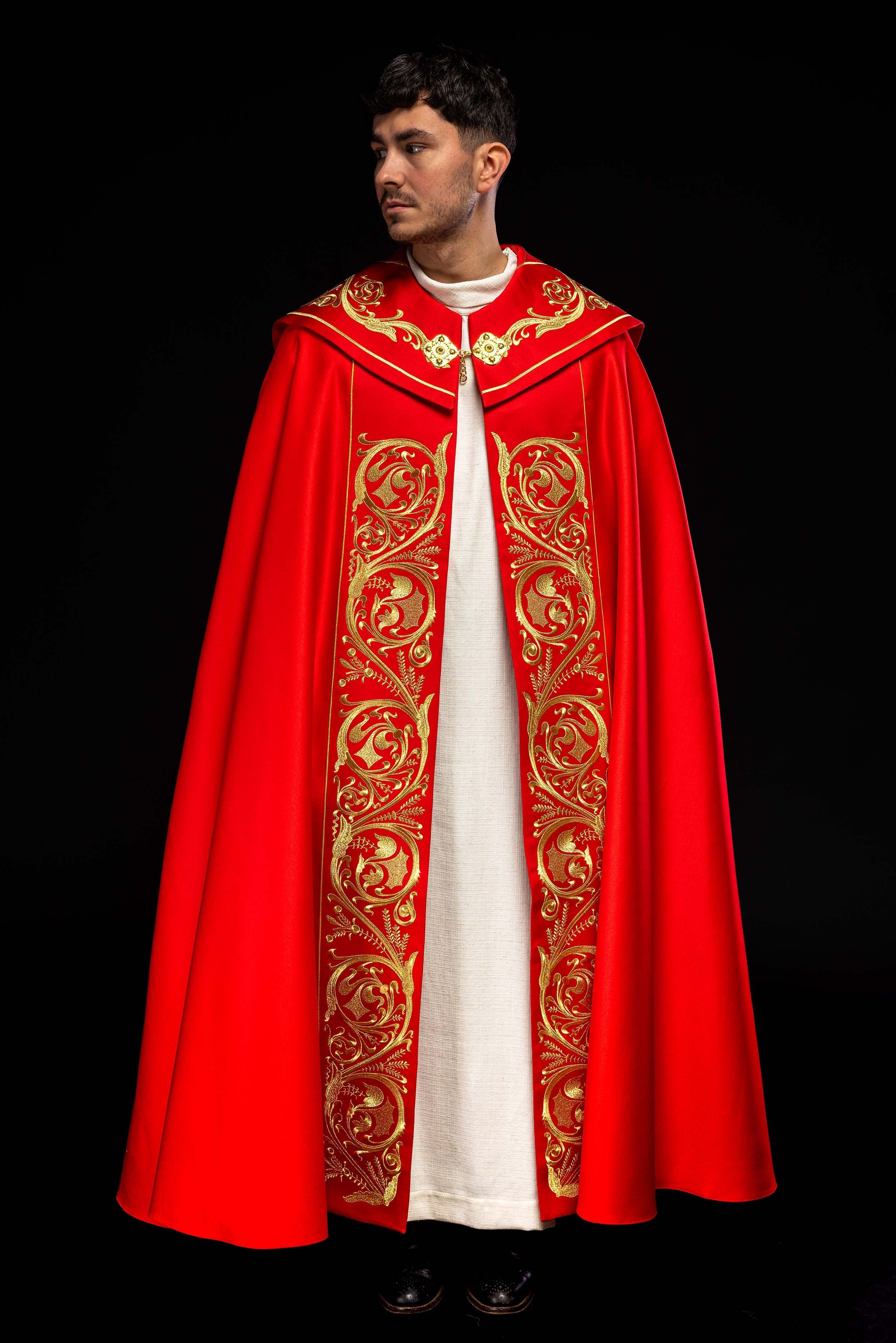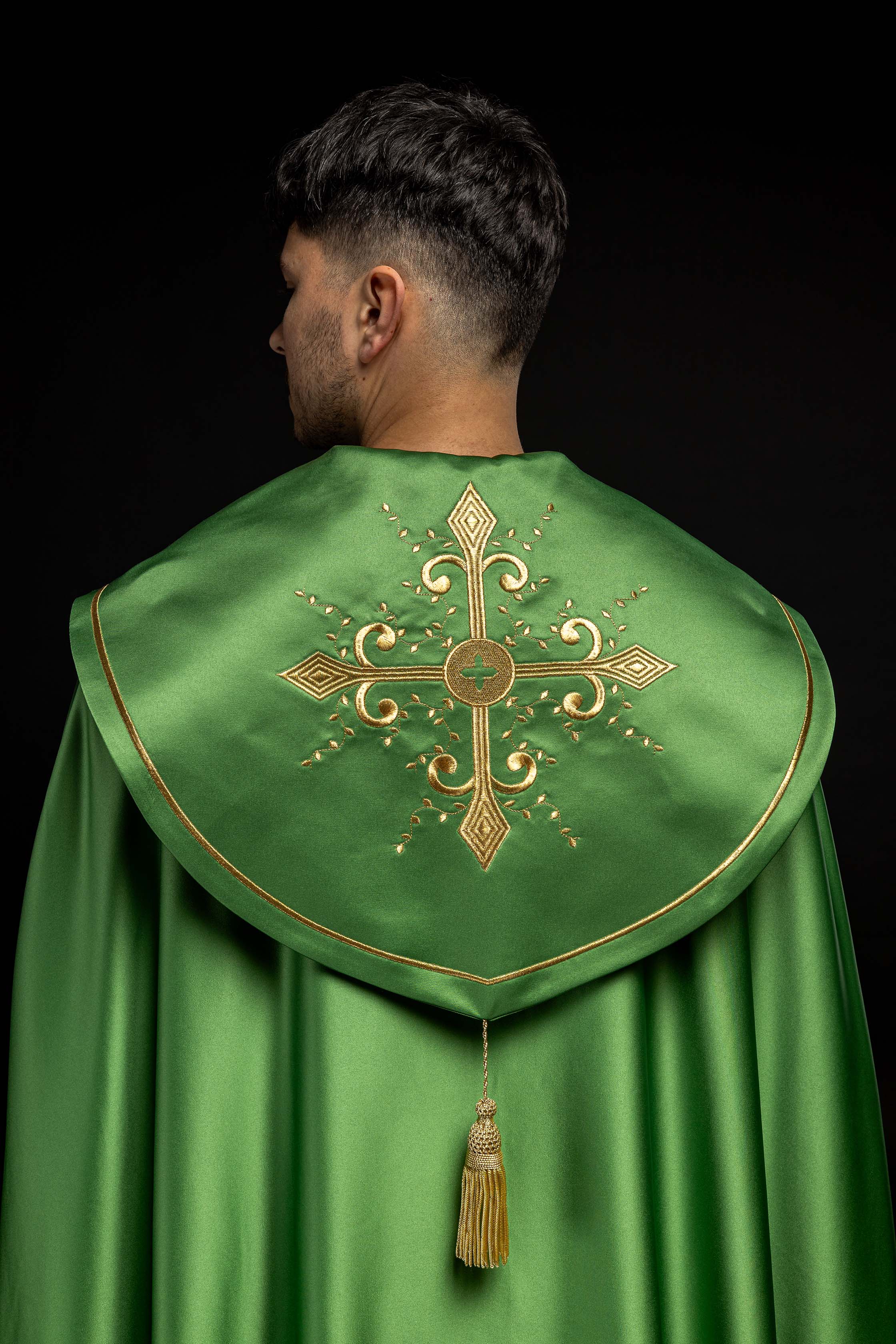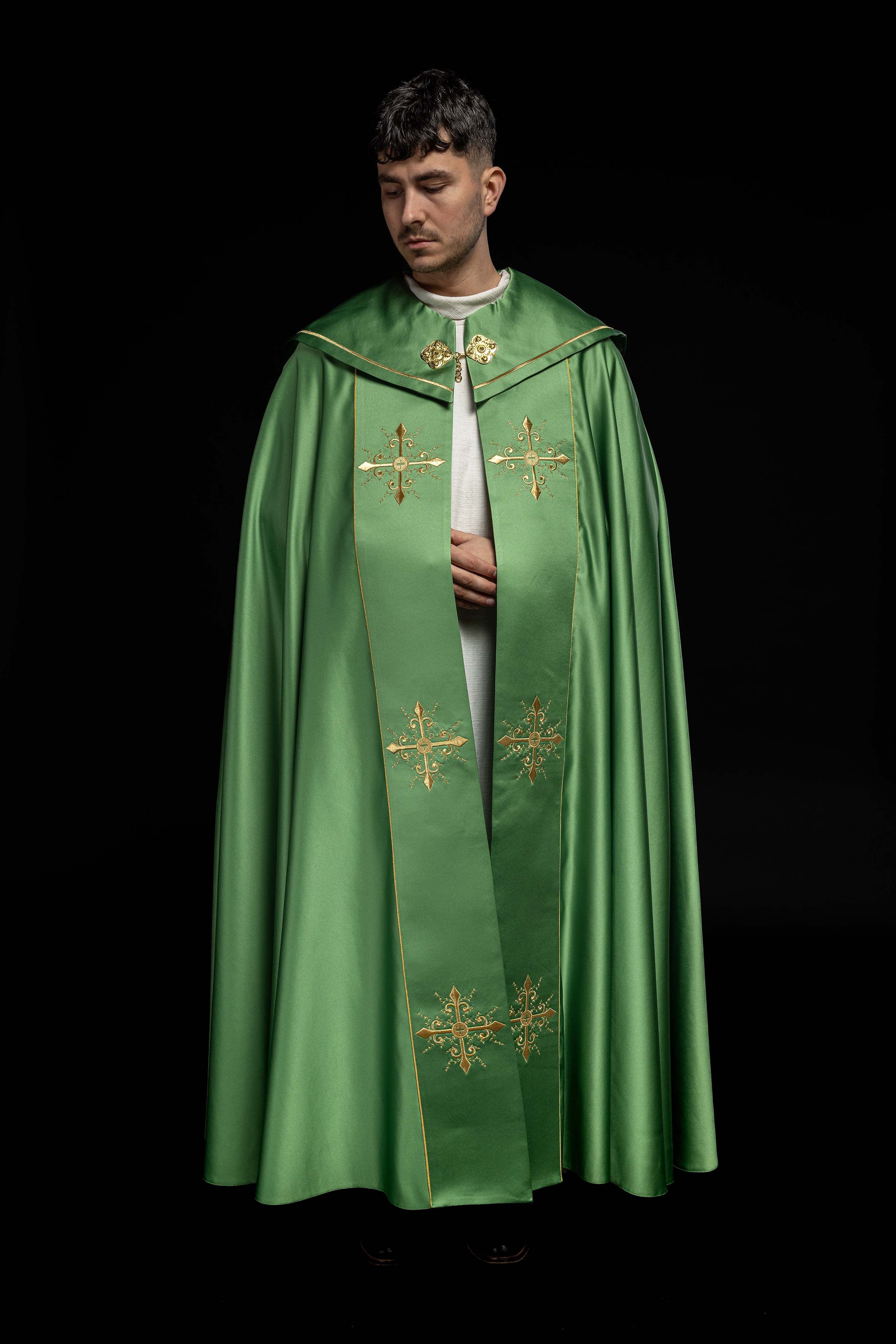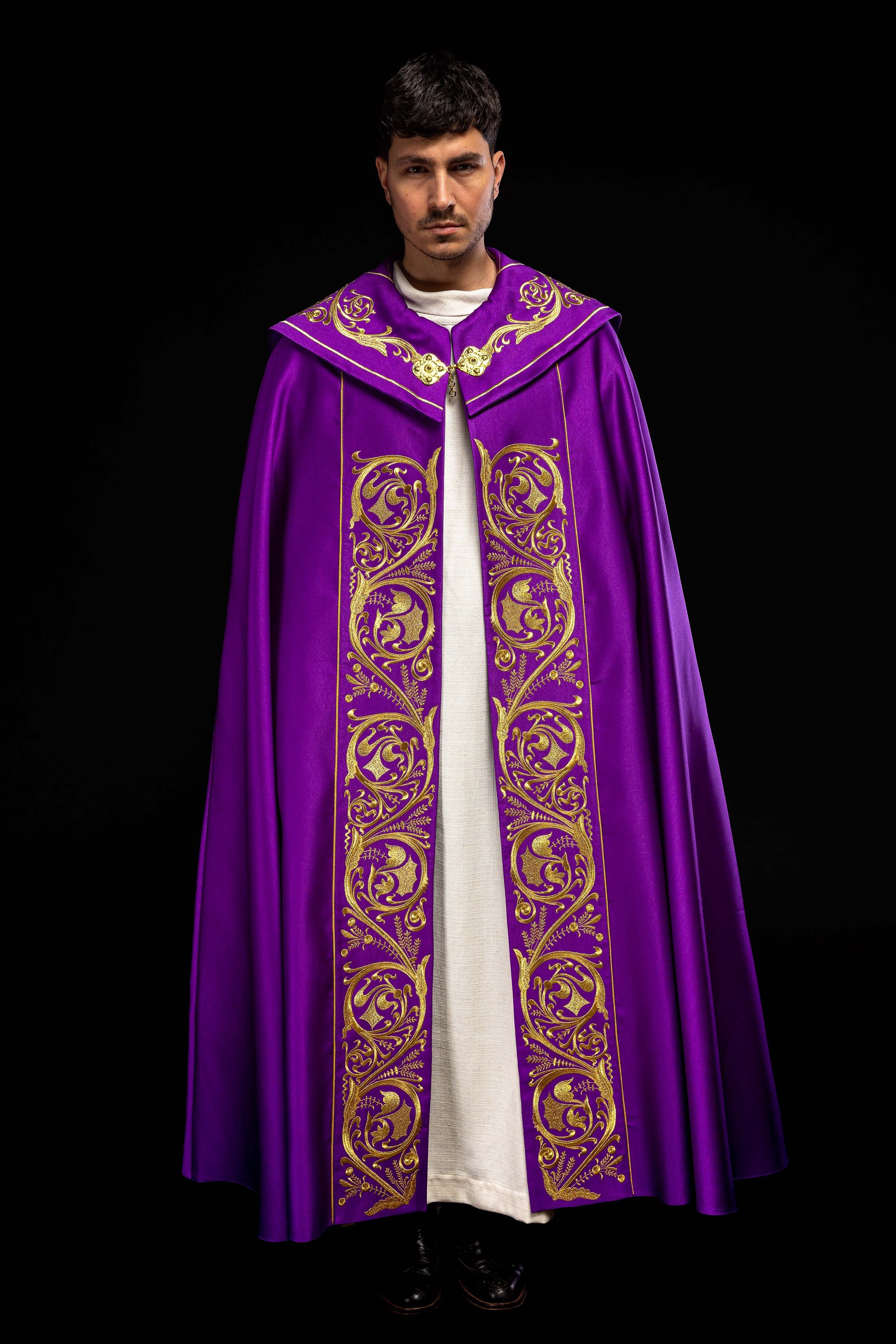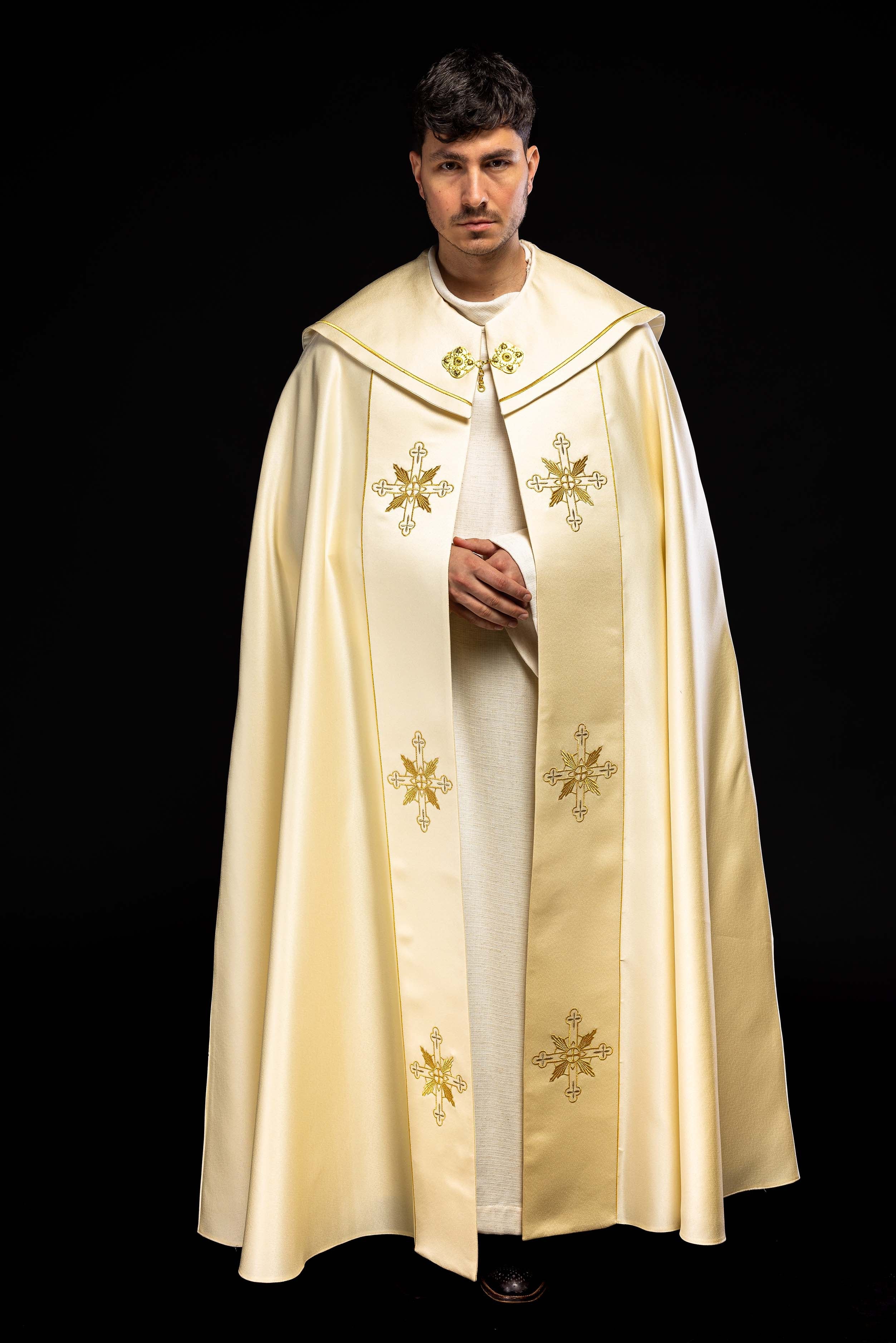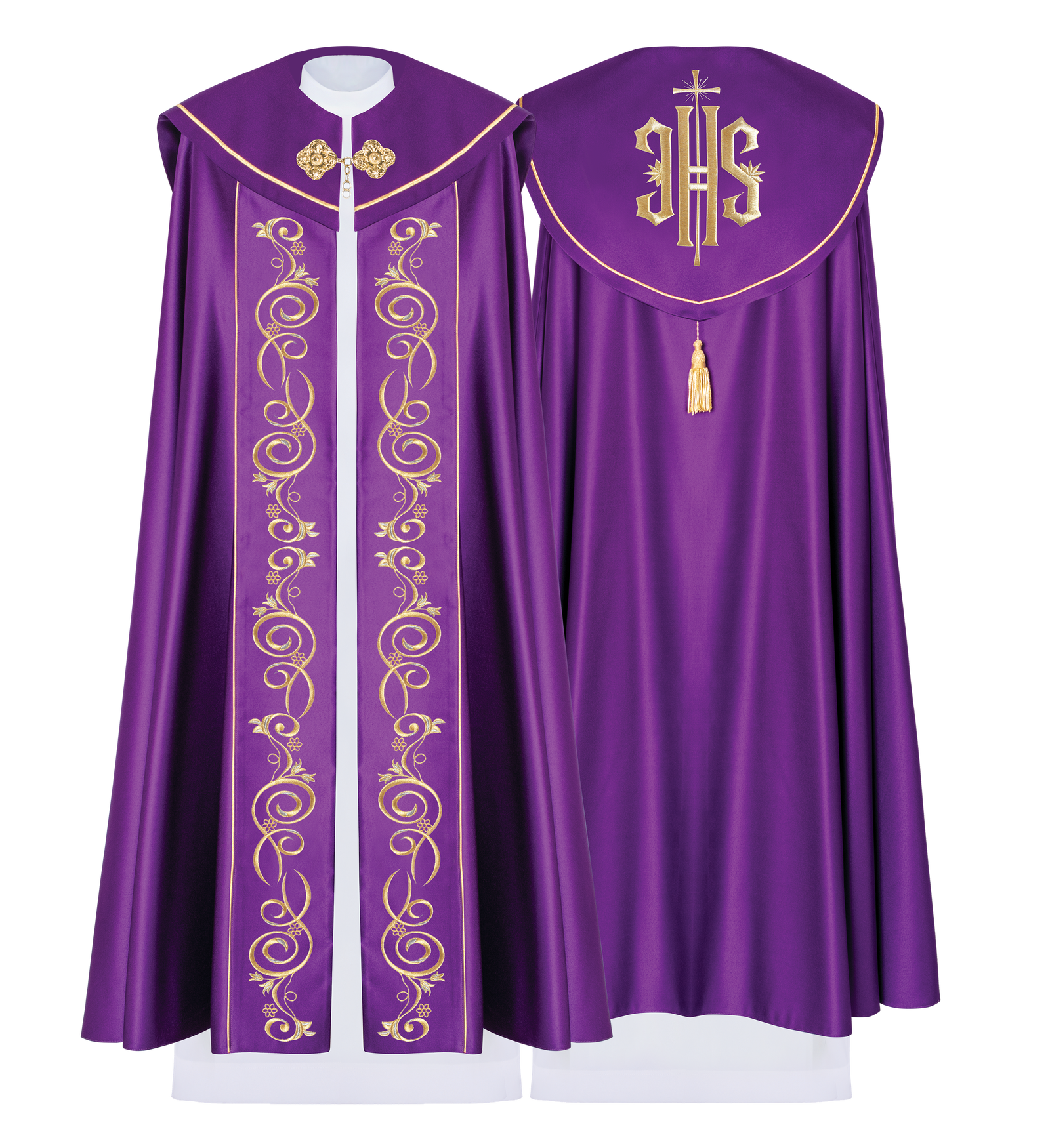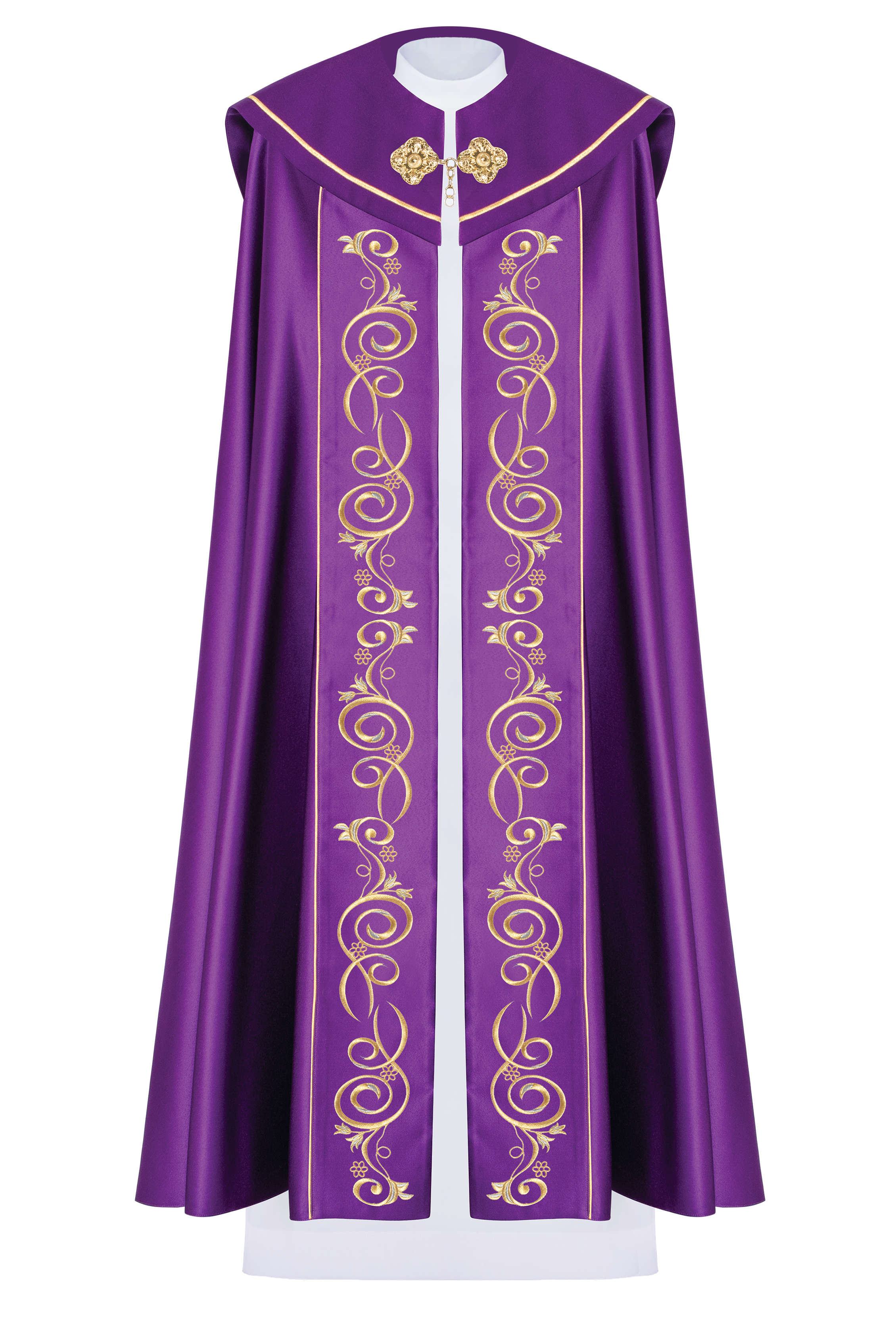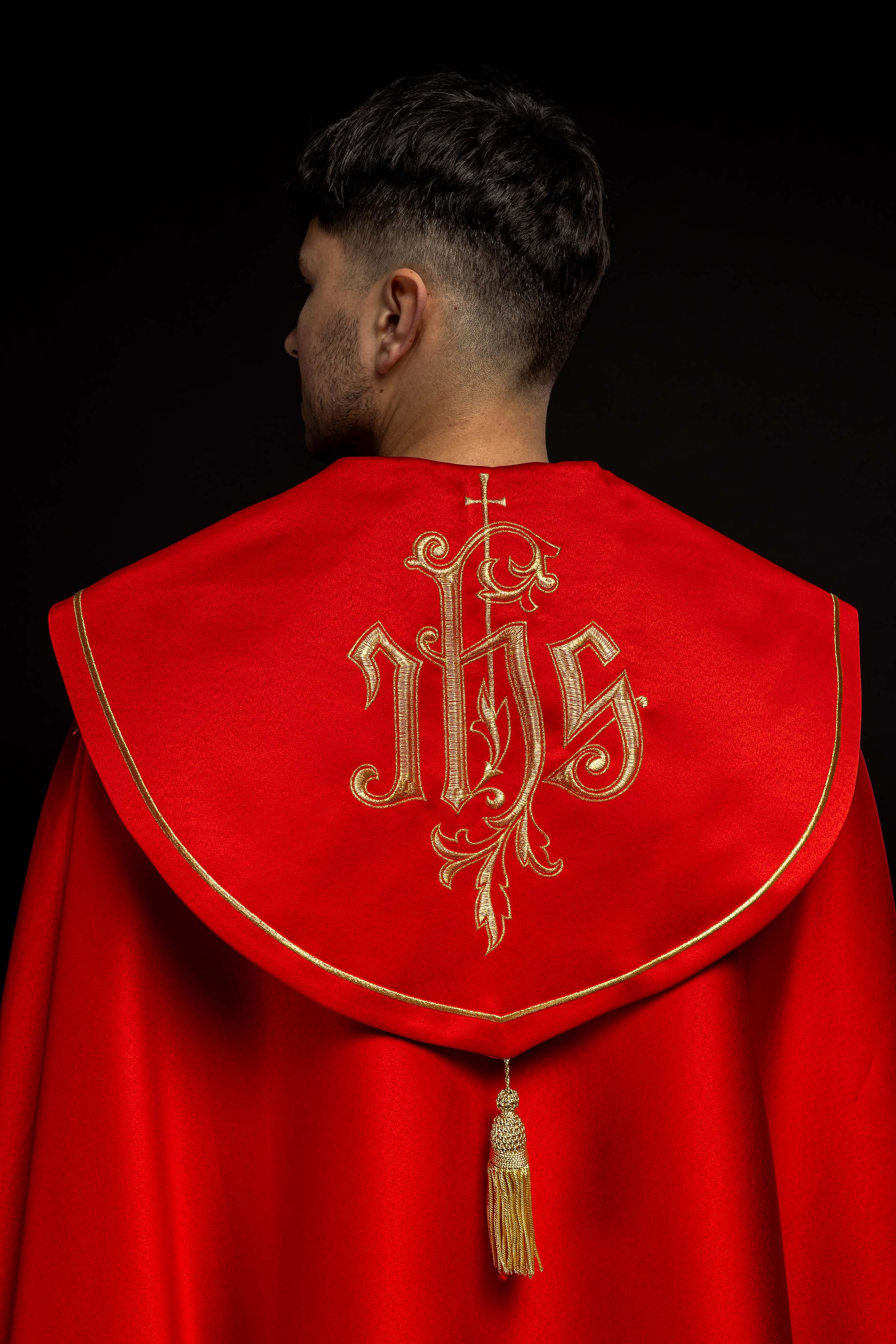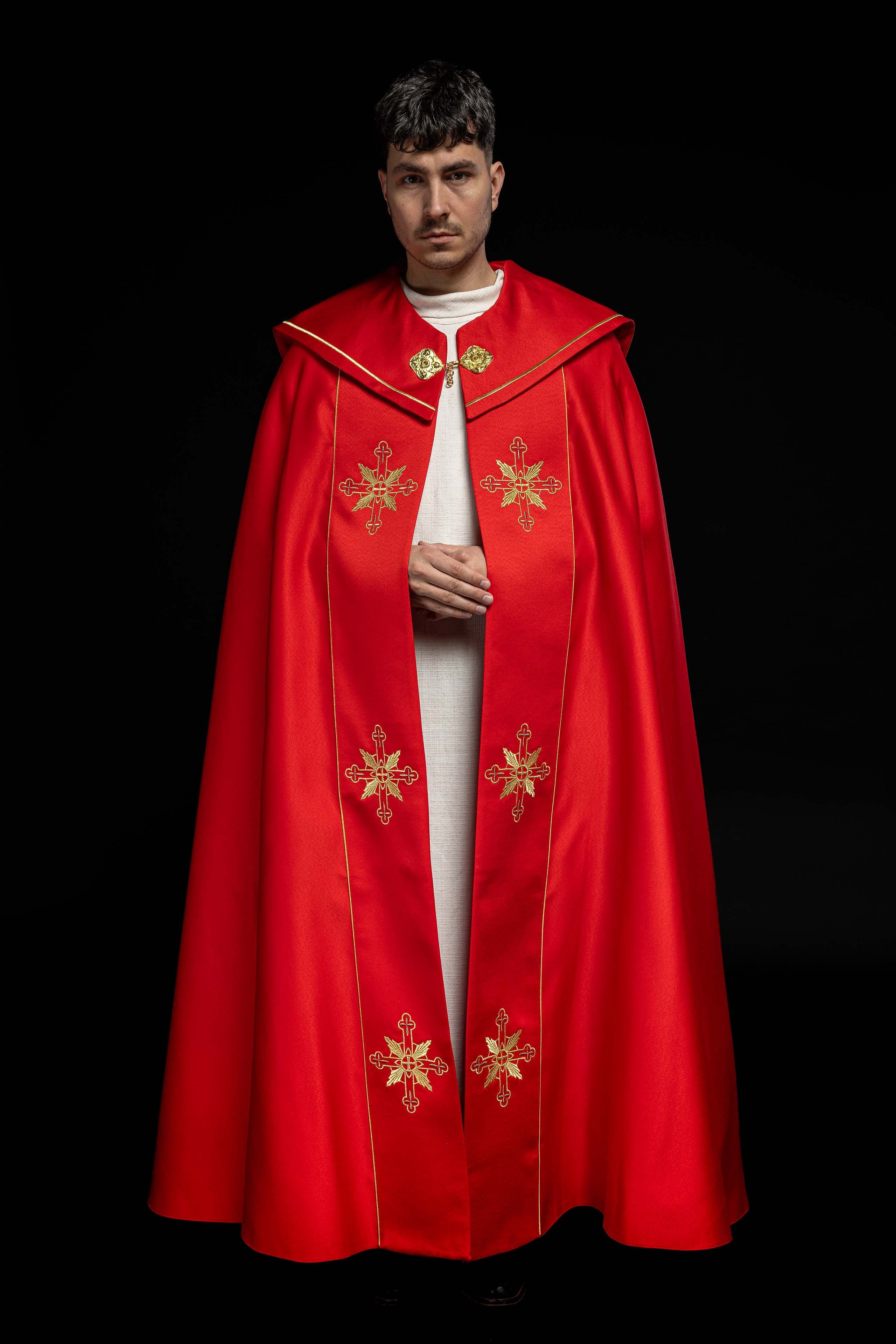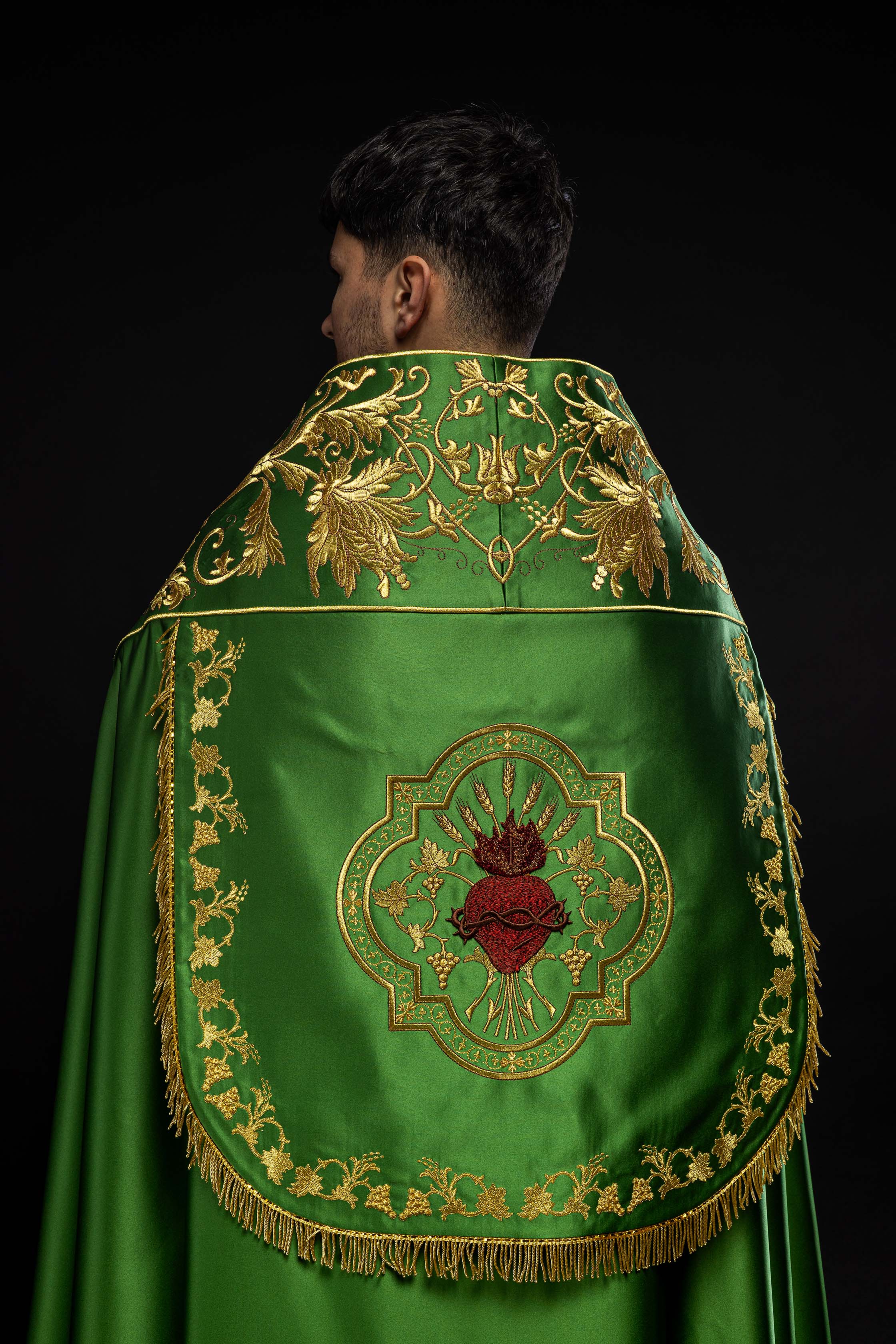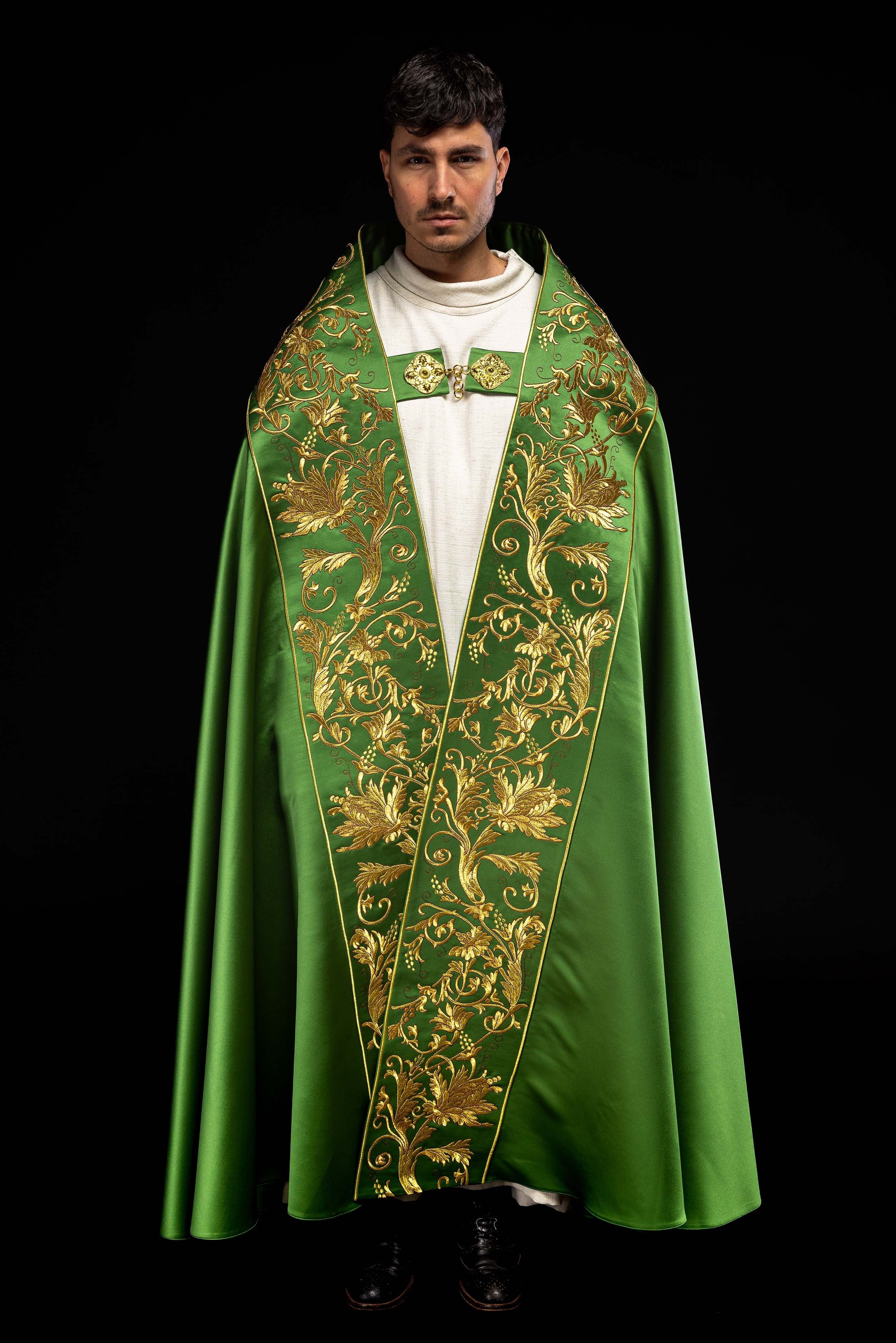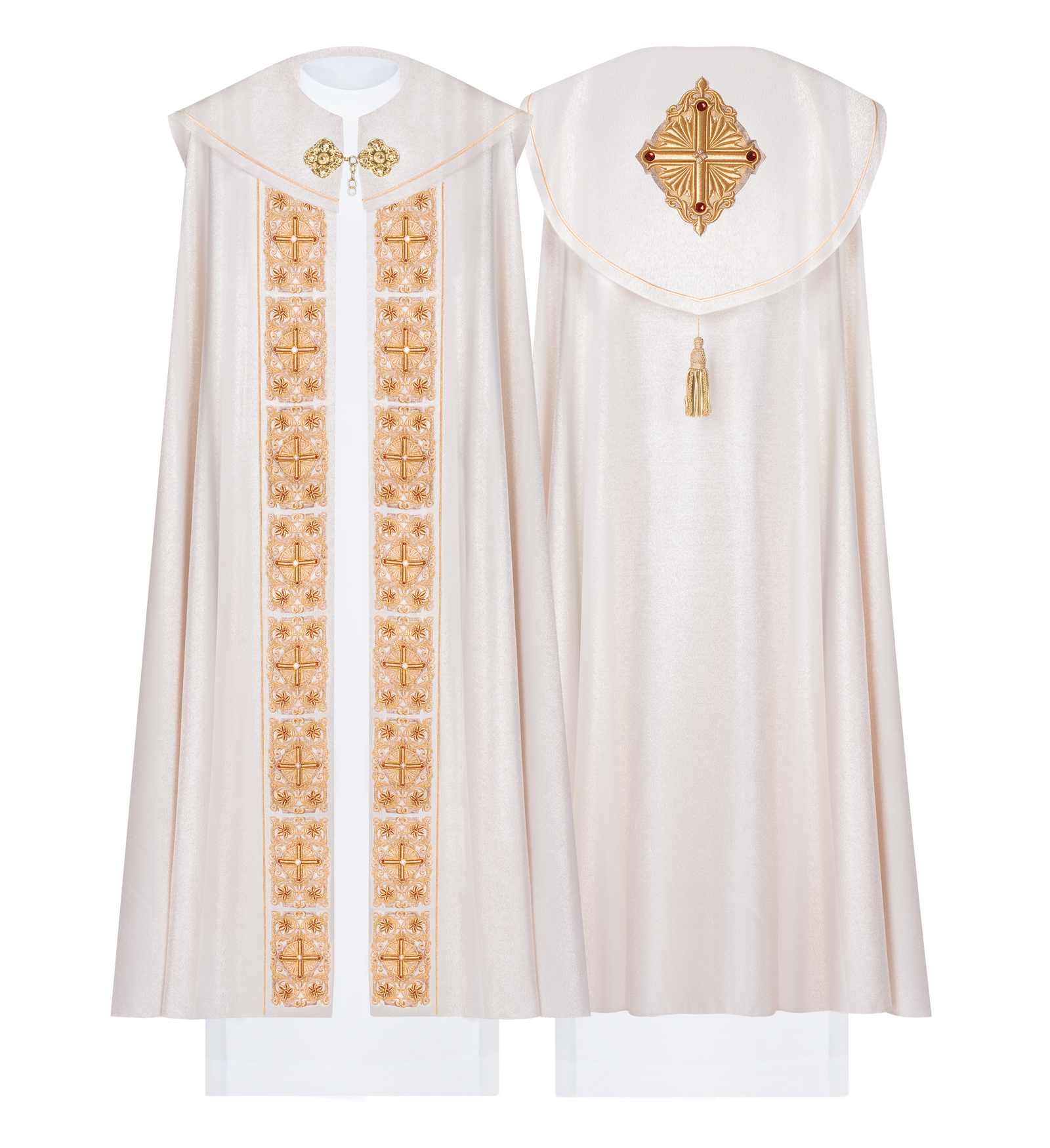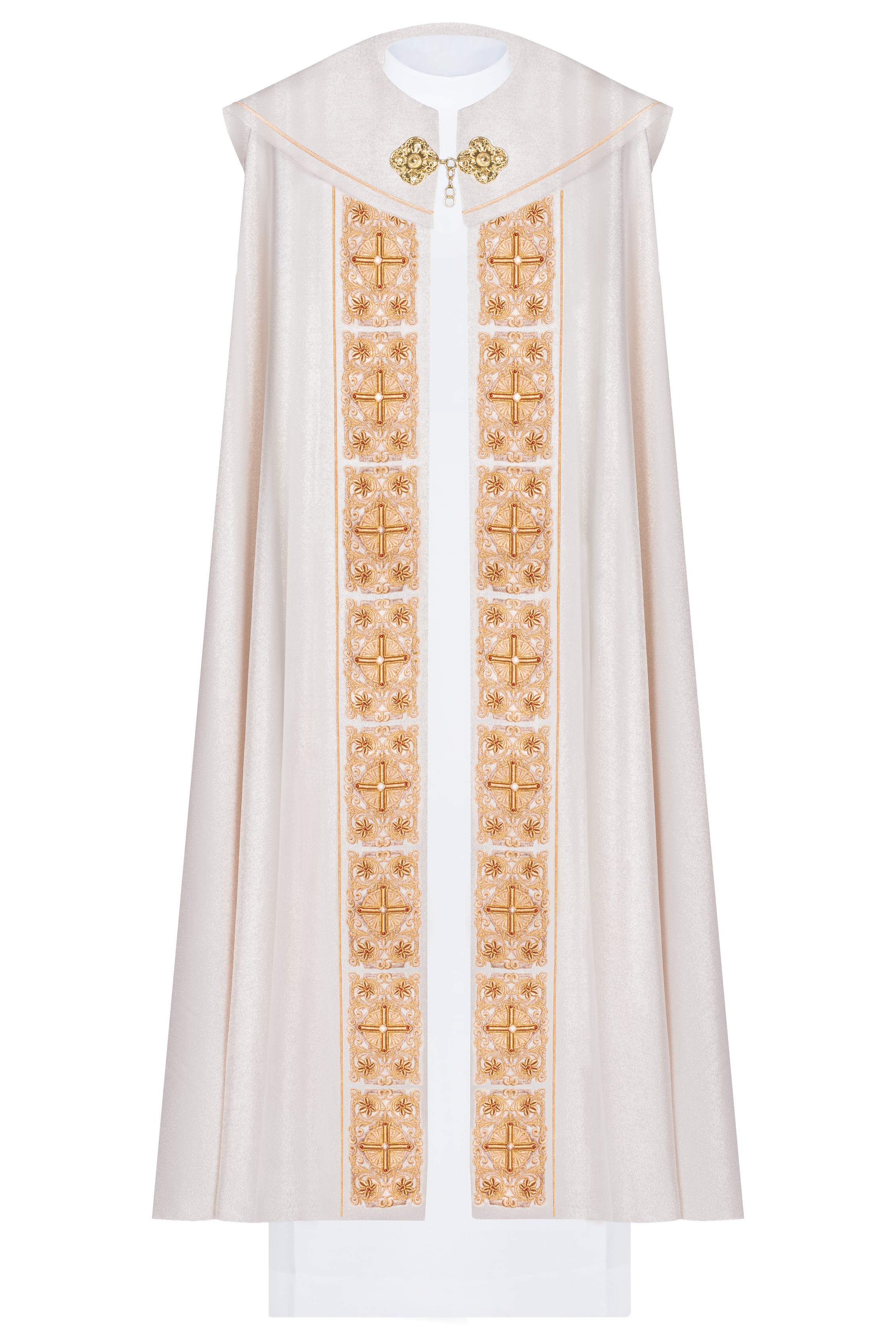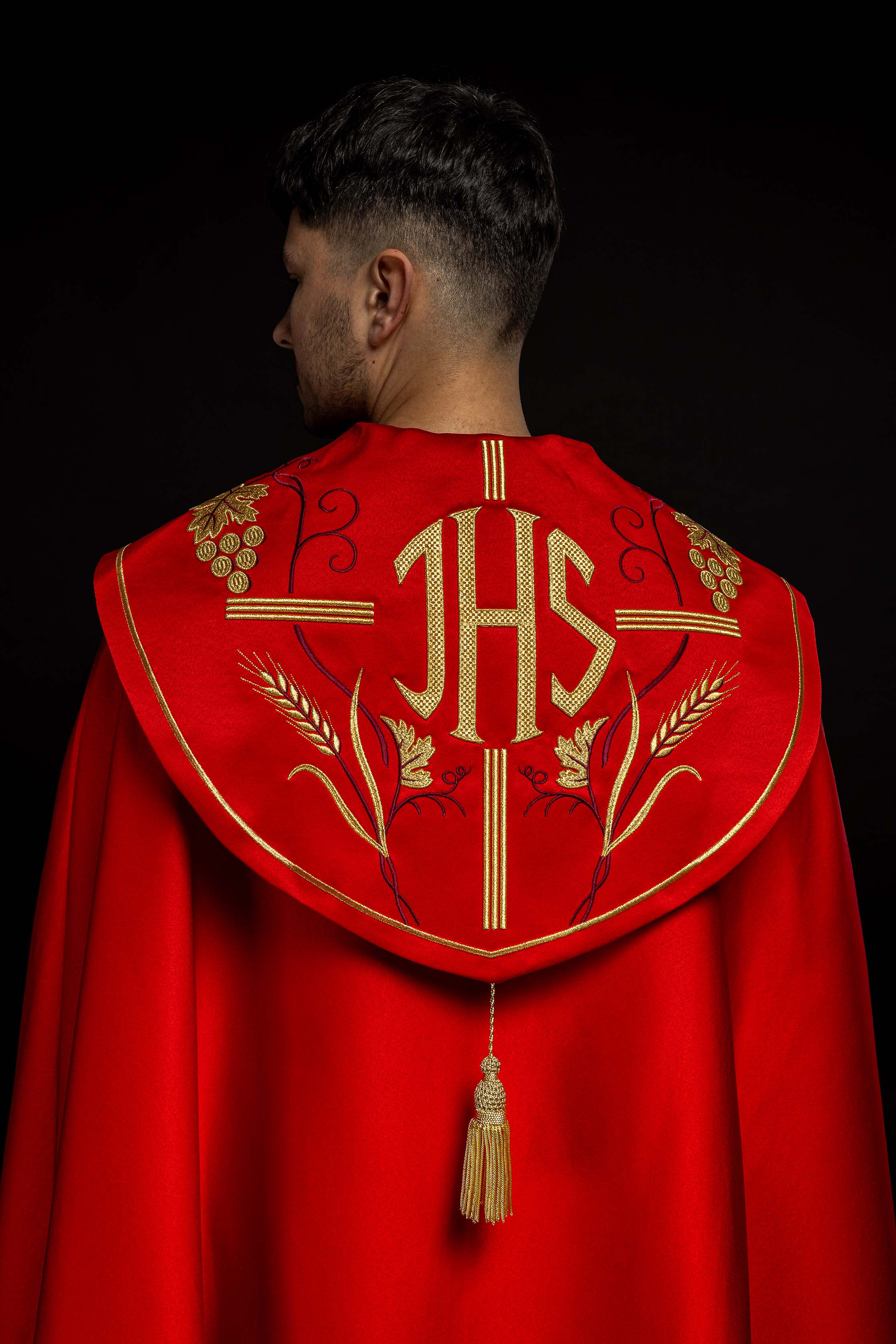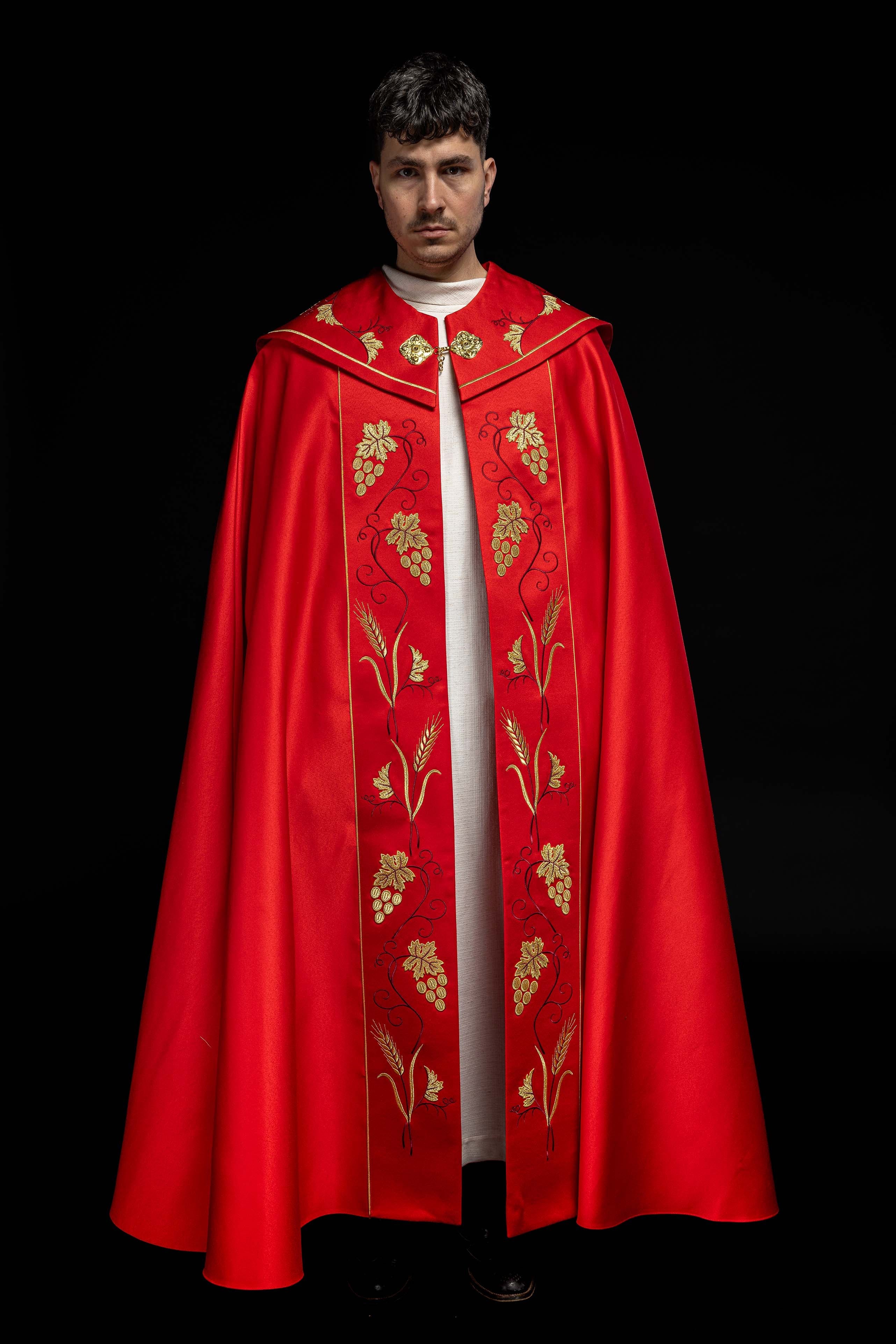Copes: Vestments of Dignity and Tradition
Copes are magnificent liturgical vestments, steeped in history and symbolism, worn primarily during processions, solemn Vespers, and other liturgical celebrations outside of Mass. At HaftinaUSA GROUP, we offer a diverse collection of copes, meticulously crafted to enhance the solemnity and beauty of every service. Our copes embody the rich traditions of the Church while incorporating the highest standards of quality and artistry.
The History and Significance of the Cope
The cope's origins can be traced back to the medieval *pluviale*, a practical cloak worn for protection from the elements. Over time, it evolved into a liturgical vestment, acquiring symbolic significance and becoming a visual representation of the Church's authority and the dignity of the celebrant. The cope's flowing design and often elaborate ornamentation serve to draw attention to the sacredness of the occasion.
Historically, the cope was not only a symbol of status but also a functional garment. Its generous size provided warmth and protection during outdoor processions and ceremonies. Today, while its practical function is less crucial, the cope remains a powerful symbol of reverence and tradition.
Materials and Embellishments: A Symphony of Craftsmanship
Our copes are crafted from a variety of luxurious materials, each carefully selected for its beauty, durability, and suitability for liturgical use. We use:
-
High-Quality Brocades: Rich and ornate fabrics with woven patterns, often incorporating gold or silver threads. Brocades add a touch of regal splendor to the cope.
-
Elegant Damasks: Woven fabrics with subtle, reversible patterns, offering a sophisticated and refined look.
-
Fine Wool Blends: Providing warmth, comfort, and a classic, timeless appeal. Wool blends are known for their durability and drape.
-
Lightweight Polyesters: Offering ease of care, wrinkle resistance, and vibrant color options.
-
Luxurious Silks: Known for their exceptional sheen, drape, and luxurious feel. Silk copes are often reserved for the most solemn occasions.
The embellishments on our copes are equally important, adding layers of meaning and visual interest. We employ a range of techniques, including:
-
Intricate Embroidery: Hand- or machine-embroidered designs featuring religious symbols, biblical scenes, or intricate patterns. Embroidery adds a personal touch and enhances the cope's artistic value.
-
Ornate Appliqués: Fabric pieces sewn onto the cope to create raised designs and add texture. Appliqués can be used to depict saints, symbols, or geometric patterns.
-
Metallic Threadwork: Gold or silver threads used to create shimmering accents and highlight key design elements.
-
Precious Gemstones and Beads: Carefully selected and applied to add sparkle and enhance the cope's overall opulence. (Used on select, high-end copes)
Types of Copes We Offer
Our collection includes a wide variety of copes to suit different liturgical seasons, occasions, and personal preferences. Some of the most popular types include:
Liturgical Color Copes
These copes are designed to correspond with the liturgical colors of the Church year:
-
White Copes: Used during Eastertide, Christmastide, and feasts of the Lord (except those related to His Passion), feasts of the Blessed Virgin Mary, the angels, and saints who were not martyrs.
-
Red Copes: Worn on Pentecost Sunday, feasts of the Apostles and Evangelists, feasts of martyrs, and celebrations of the Holy Spirit.
-
Green Copes: Used during Ordinary Time.
-
Violet Copes: Worn during Advent and Lent, as well as for penitential services.
-
Gold Copes: Can be used in place of white, red, or green copes on solemn occasions.
-
Rose Copes: May be worn on Gaudete Sunday (Third Sunday of Advent) and Laetare Sunday (Fourth Sunday of Lent).
Marian Copes
These copes are specifically designed to honor the Blessed Virgin Mary, often featuring blue or white fabrics and Marian symbols such as lilies, roses, and the Star of David.
Funeral Copes
Funeral copes are typically black or violet, symbolizing mourning and remembrance. They may feature somber designs and symbols of eternal life.
Processional Copes
These copes are designed for processions and outdoor ceremonies, often featuring lightweight fabrics and practical closures.
Copes with Embroidered Symbols
Our copes often feature embroidered symbols that hold deep theological meaning. Some common symbols include:
-
The Cross: The central symbol of Christianity, representing Christ's sacrifice and redemption.
-
The Chi Rho: An early Christian symbol representing Christ, formed by superimposing the Greek letters chi (Χ) and rho (Ρ).
-
The Lamb of God: Symbolizing Christ's innocence and sacrifice.
-
The Pelican: An ancient symbol of Christ's self-sacrifice, as the pelican was believed to wound its own breast to feed its young with its blood.
-
The IHS Monogram: A traditional abbreviation of the name of Jesus in Greek.
-
Marian Symbols: Lilies (purity), roses (love), and the Star of David (Mary's lineage).
Choosing the Right Cope
Selecting the right cope depends on several factors, including the liturgical season, the occasion, the celebrant's personal preferences, and the overall aesthetic of the church. Consider the following when making your selection:
-
Liturgical Color: Choose a cope that corresponds with the liturgical color of the day or season.
-
Fabric and Embellishments: Select a fabric and embellishment style that reflects the solemnity of the occasion and complements the other liturgical vestments.
-
Fit and Comfort: Ensure that the cope fits comfortably and allows for ease of movement.
-
Overall Style: Choose a cope that aligns with your personal taste and the overall aesthetic of your church.
Caring for Your Cope
Proper care is essential to preserve the beauty and longevity of your cope. Follow these guidelines:
-
Storage: Store your cope on a padded hanger in a cool, dry place, away from direct sunlight.
-
Cleaning: Follow the manufacturer's instructions for cleaning. Some copes may require professional dry cleaning.
-
Spot Cleaning: Address spills and stains immediately with a gentle stain remover.
-
Ironing: If necessary, iron your cope on a low setting, using a pressing cloth to protect the fabric.
-
Handling: Handle your cope with care, avoiding excessive pulling or stretching.
Why Choose HaftinaUSA GROUP for Your Copes?
At HaftinaUSA GROUP, we are committed to providing our customers with the highest quality liturgical vestments, crafted with meticulous attention to detail and a deep respect for tradition. We offer:
-
Exceptional Craftsmanship: Our copes are made by skilled artisans with years of experience in creating liturgical vestments.
-
Premium Materials: We use only the finest fabrics and embellishments, ensuring that our copes are both beautiful and durable.
-
Wide Selection: We offer a diverse collection of copes to suit every liturgical need and personal preference.
-
Customization Options: We can create custom copes to your exact specifications, including personalized embroidery and unique designs.
-
Excellent Customer Service: Our knowledgeable and friendly staff are always available to assist you with your order.
The Cope as a Symbol of Faith
The cope is more than just a garment it is a symbol of faith, tradition, and the sacredness of liturgical celebrations. By choosing a cope from HaftinaUSA GROUP, you are investing in a piece of art that will enhance the beauty and solemnity of your services for years to come. We are honored to be a part of your ministry and to provide you with vestments that reflect the glory of God.
Copes: A Timeless Tradition in Modern Worship
While rooted in centuries of tradition, the cope remains a relevant and powerful symbol in modern worship. Its grandeur and elegance elevate the liturgical experience, reminding all present of the sacred nature of the occasion. HaftinaUSA GROUP is dedicated to preserving this tradition by offering copes that honor the past while embracing the present.
Exploring the Different Styles and Cuts of Copes
Beyond the liturgical colors and embellishments, copes also come in various styles and cuts, each offering a unique aesthetic and level of formality. Understanding these variations can help you choose the perfect cope for your specific needs.
The Gothic Cope
The Gothic cope is characterized by its wider cut and more voluminous drape. It often features a large, elaborate hood and is typically made from heavier fabrics such as brocade or damask. Gothic copes are often associated with more traditional or formal liturgical settings.
The Roman Cope
The Roman cope has a narrower cut and a more streamlined silhouette. It typically features a smaller, less ornate hood and is often made from lighter-weight fabrics. Roman copes are often preferred for their practicality and ease of movement.
The Semi-Gothic Cope
The Semi-Gothic cope represents a compromise between the Gothic and Roman styles, offering a moderate cut and a balance of formality and practicality. It's a versatile choice that can be suitable for a variety of liturgical settings.
The Importance of a Well-Fitted Cope
Regardless of the style you choose, ensuring a proper fit is crucial for both comfort and aesthetics. A well-fitted cope should drape gracefully and allow for freedom of movement without being too bulky or restrictive. Consider the following factors when assessing the fit of a cope:
-
Length: The cope should reach approximately to the ankles.
-
Shoulder Width: The cope should sit comfortably on the shoulders without slipping or bunching.
-
Neckline: The neckline should be comfortable and not too tight.
-
Closure: The closure (usually a clasp or a hook-and-eye) should be secure and easy to use.
Copes for Special Occasions and Feasts
Certain feasts and special occasions call for particularly elaborate and beautiful copes. Consider investing in copes specifically designed for:
-
Christmas: White or gold copes with festive embroidery, such as images of the Nativity or angels.
-
Easter: White or gold copes symbolizing the resurrection of Christ.
-
Pentecost: Red copes representing the Holy Spirit.
-
Marian Feasts: Blue or white copes honoring the Virgin Mary.
-
Feasts of Saints: Copes in the appropriate liturgical color, often featuring symbols associated with the particular saint.
The Role of the Cope in Processions
The cope plays a significant role in processions, adding a sense of solemnity and grandeur to the occasion. The flowing lines of the cope and its often elaborate embellishments create a visually stunning effect as the celebrant moves through the church or the streets. When choosing a cope for processions, consider factors such as weight, ease of movement, and visibility.
Copes: A Reflection of Devotion and Reverence
Ultimately, the cope is a reflection of devotion and reverence for the sacred mysteries of the Church. By carefully selecting and maintaining your copes, you are contributing to the beauty and solemnity of liturgical celebrations and honoring the traditions of the faith. HaftinaUSA GROUP is proud to offer a collection of copes that embody these values and inspire a deeper connection with the divine.
The Future of Cope Design
While rooted in tradition, cope design continues to evolve, incorporating new materials, techniques, and artistic expressions. HaftinaUSA GROUP is committed to staying at the forefront of this evolution, offering copes that blend timeless elegance with contemporary innovation. We are constantly exploring new ways to enhance the beauty, comfort, and symbolic meaning of this venerable vestment.








